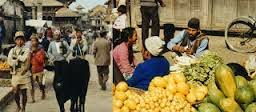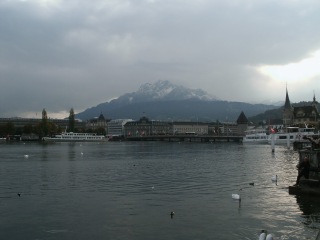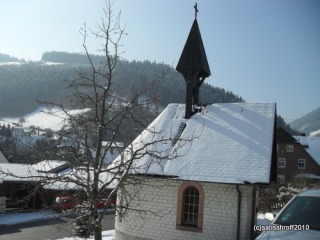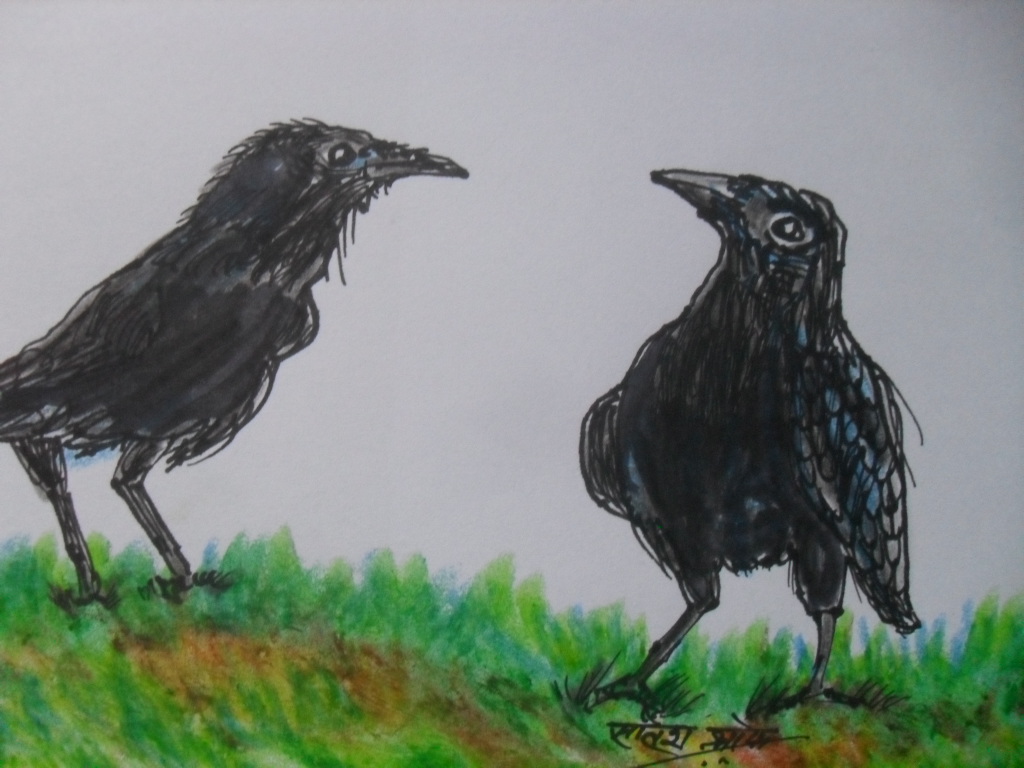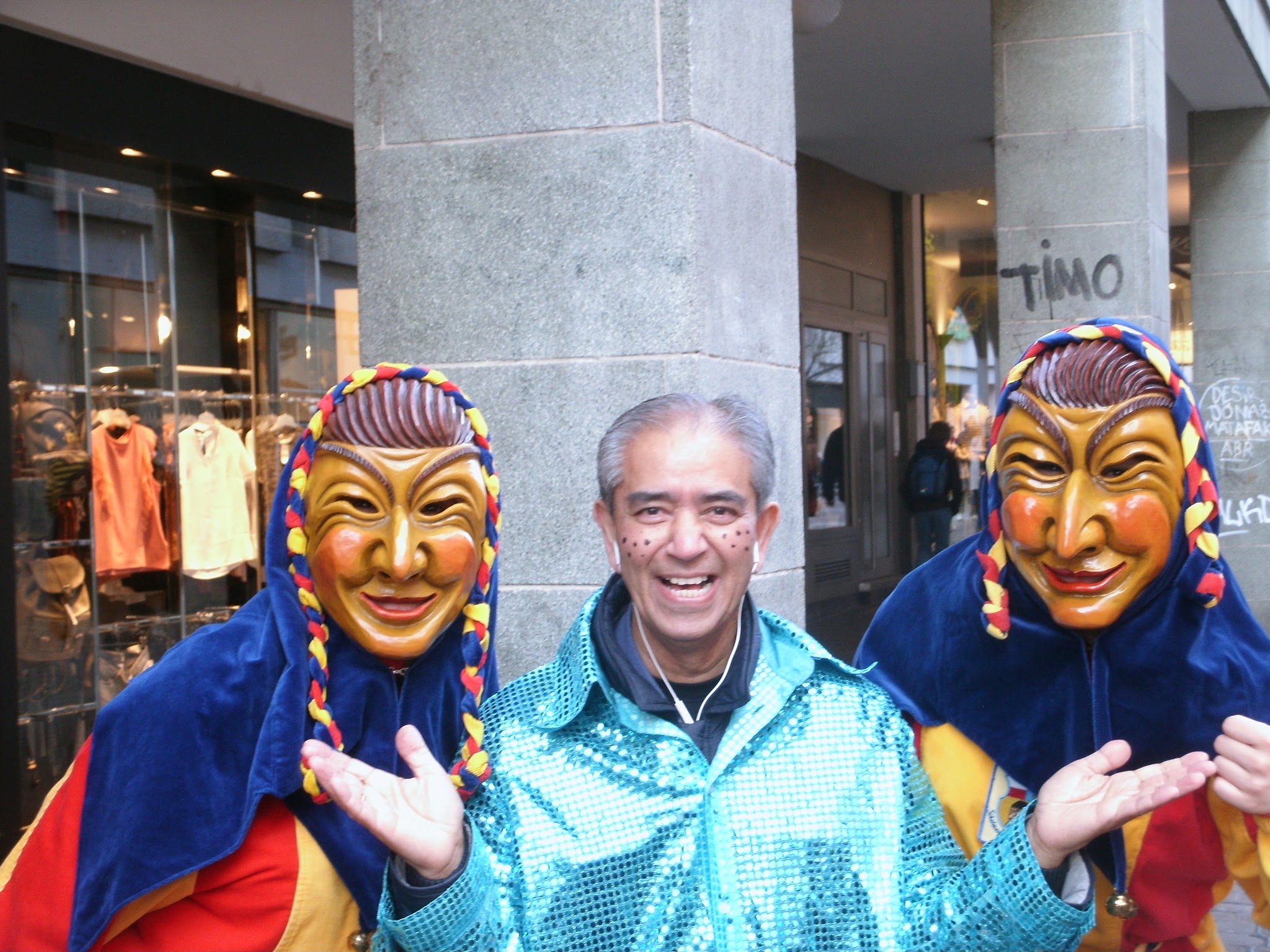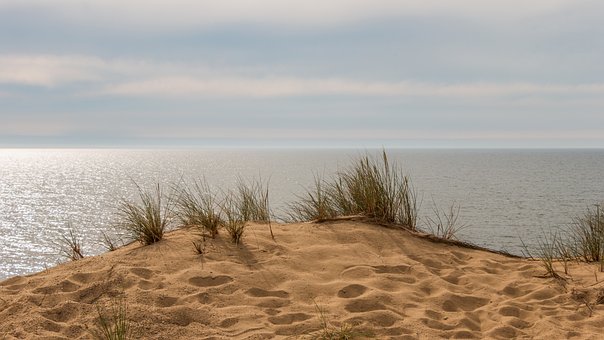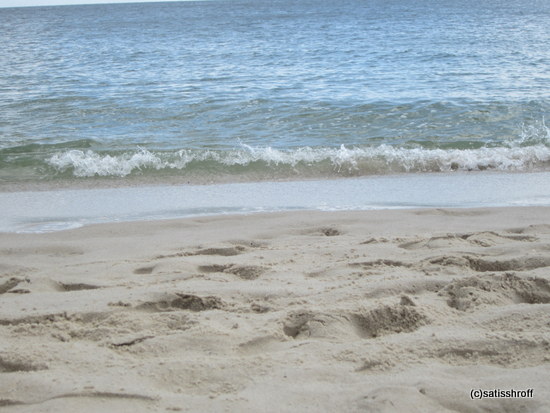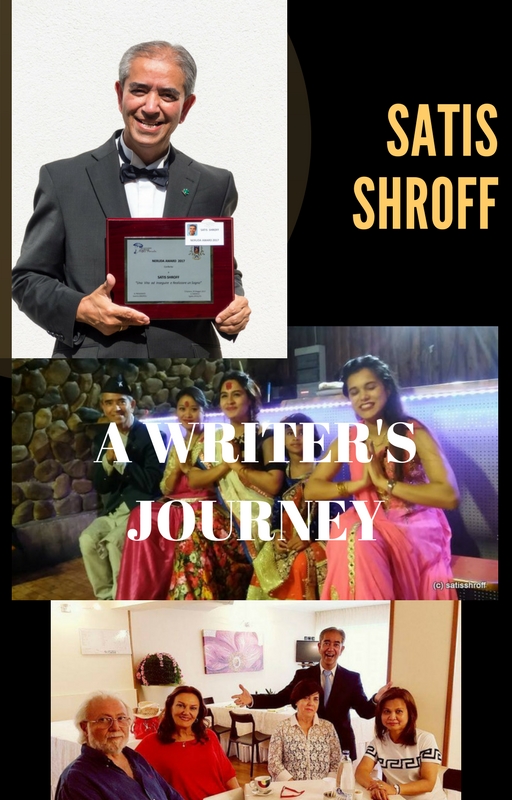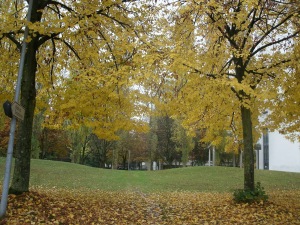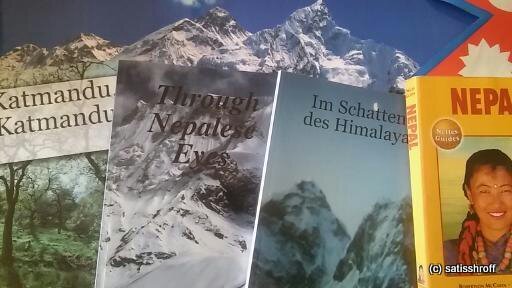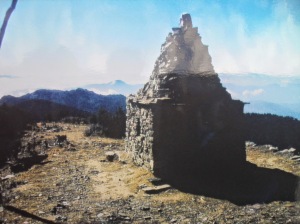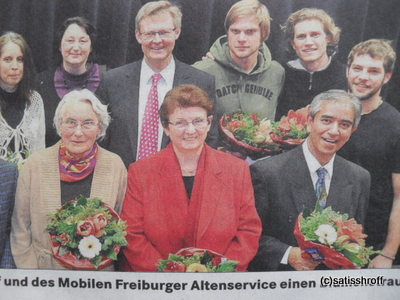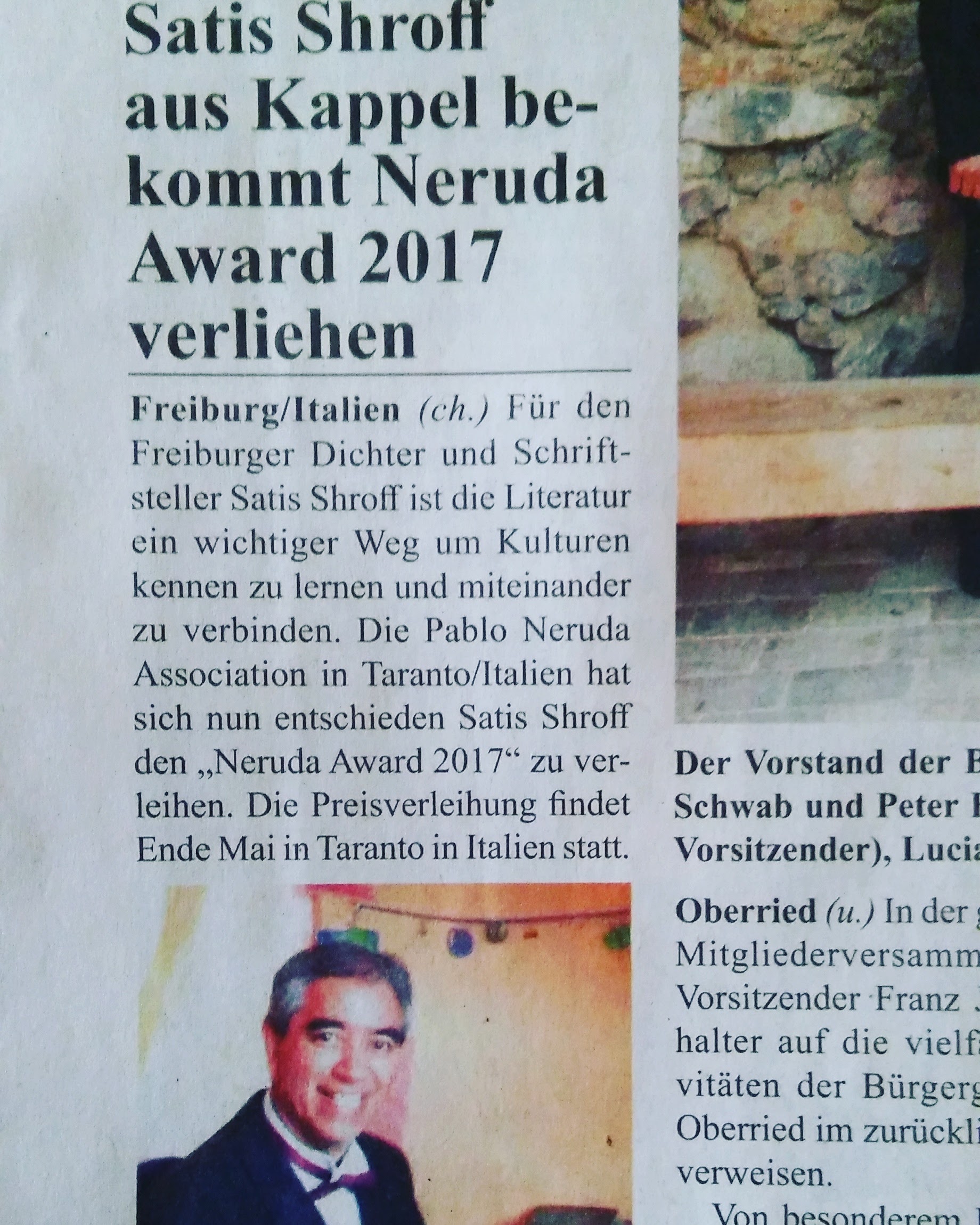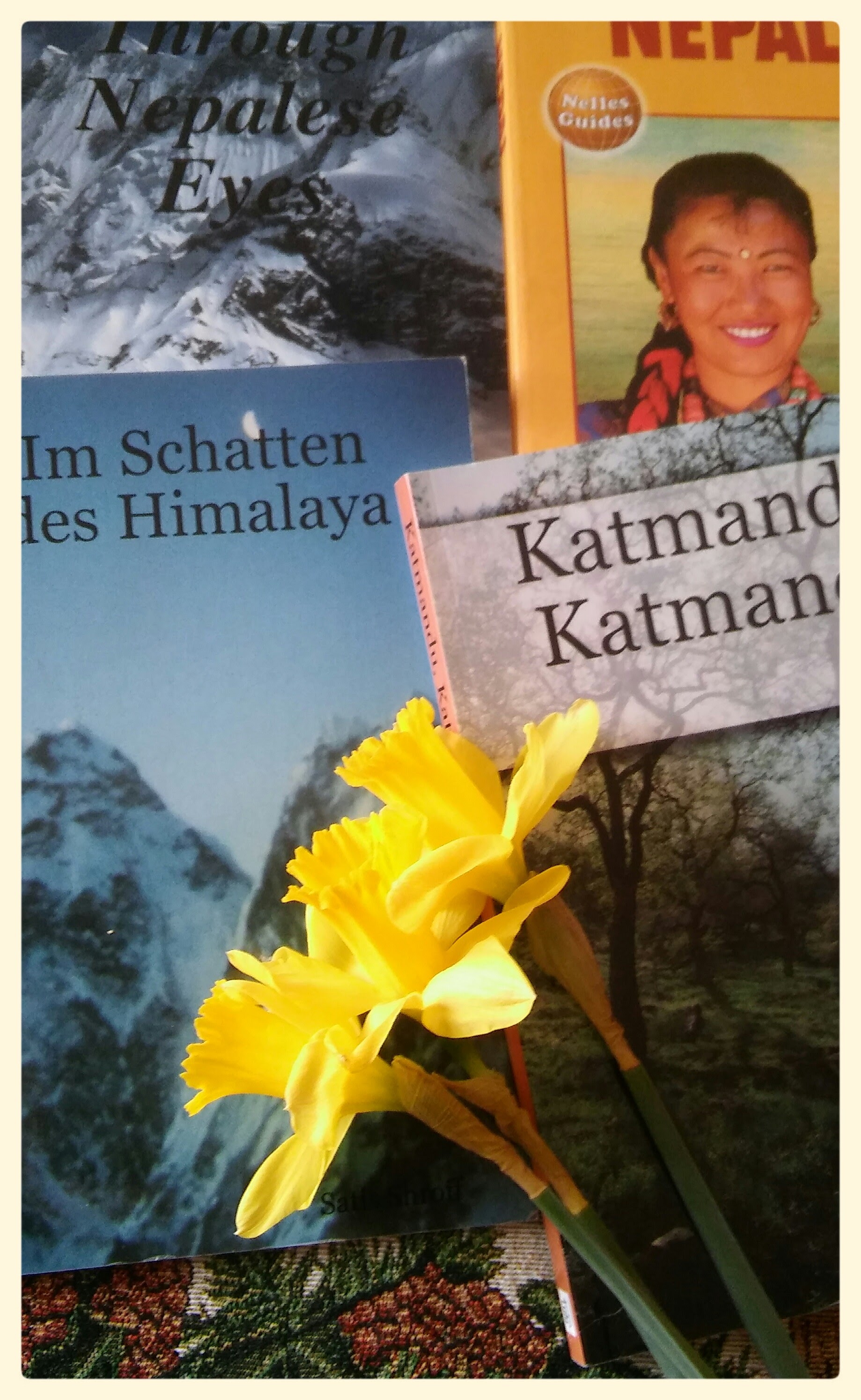LITTENWEILER LITERATURE: SATIS SHROFF
 |
| Heimat: Schwarzwäldertorte, aber bitte mit Sahne |
 |
| Satis Shroff & Herbert Tombreul at his birthday party |
 |
| Satis Shroff with the Schauinsländer Berggeister |
European Culture: Mein Heimat, My Homeland
My Schwarzwald, My Heimat
(Satis Shroff)
On July 6, 2011 Walter Fuss, one of the stalwarts of the men’s choir, celebrated his 80th Birthday in his house, which lies between Kappel and Kirchzarten. Since he’d invited the chor, we went at 5pm, greeted each other with handshkakes and handed him our present and his wife Magdalena a bouquet of flowers.
It was idyllic in the garden which was behind the house. The sun was shining, the tables were prepared for the guests and Walter was waiting with his family and relatives. Walter had given us a list of his favourite songs during our rehearsals for the Geistliche Konzert, and we didn’t disappoint him.
The first song was Abendfrieden composed by Hildegard Eckhardt. The song was about Bergheimat(mountain home), which evokes a feeling of peace in the hilly surroundings of the Black Forest.
The second song was Bild dir nichts ein composed by A. Gunthet and dealt with life: you’re only a human being, whether rich or poor, big or small, at the start or at the end, we’re all together the same. A thought-provoking song.
The next one was Am Brunnen vor dem Tore (Der Lindenbaum) composed by Friedrich Silcher, about a fountain near the gate where you’d find your peace.
The fourth song was Mala Maja, a song by a wise man from Croatia with German text by Arnold Kemkens, about a thwarted love in which the singer asks: ‘Beautiful Small One, why can’t you love me? Do you love the other much more? I can’t forget it.’
The last song was My Schwarzwald, My Homeland composed by Joseph Blum and was about: where God’s wind blows and birds are at peace, crowned by the dark pine trees, is the home of my parents. How often did I want to leave the Heimat earth. O Schwarzwald you highland light, O land of blue mountains built in the sky.
After we’d feasted with Schwarzwälder schinken, sausages, self-made farmer’s bread and baguette and drunk beer or red and white wine, three male singers from Walter’s family packed out their musical instruments: two guitars and an accordion, and what followed was a Heimat evening with German, English songs sung together. A jolly musical family, I must say and it was lovely to hear all the ladies yodling to Alpine songs. That was family-togetherness whereby music and songs seemed to bind the family.
Later in the night we sang Beatles and Elvis Presley songs and, of course, other songs of the sixties. In my mind I was transported suddenly to Cat Steven’s Katmandu with the zeitgeist of those days: make love, not war, hippies smoking charas, peace signs everywhere, Europeans wandering in the streets of Katmandu in pairs at peace and tranquillity with the world.
It was almost midnight when we bade Walter and his dear wife Magdelena farewell and returned home to roost, humming the tunes we’d sung in the course of the wonderful evening.
* * *
 |
| A poem by Satis Shroff: On the Delights of Summer |
Frisch auf! Walks in the Black Forest by Satis Shroff
For a week Freiburg became the capital city of the trekkers from all over Germany. There they were bearing their association or verein flags, banners, wearing their traditional costumes or trekking outfits singing traditional trekking songs called ‘Wanderlieder,’ because trekking is a way of life in the Alpine countries, and Freiburg and the Black Forest are no exception. They were all obliged to go through Freiburg’s Schwabentor, the gateway of the Swabians. I found the entire spectacle with olde, traditional costumes rather delightful and the trekkers who came to town rather friendly.
The participants were greeted by the minister for ecology Tanja Gönner at the elegant Concert House and the procession began at 2 pm along the Schwabentor. Last year 1,7 million trekkers took part in the treks organised by the vereine (associations). In Freiburg alone, you could take part in 100 treks with 300 trained-guides. 56 per cent of Germans say that walking in the countryside is one of their favourite pastimes. Even the health insurance companies recognise the Wanderverein’s decorations as a show of health performance and a desire to lead healthy lives. After all, men are ruled by toys, said Napoleon, and distributed medals to his troops for their performance and participation in many battles. In this case, it’s a peaceful jolly trekking, and the people are not out to conquer countries but hearts. The magic word is: Völkerverständigung. Aiming at the understanding between different ethnic folks. Even among the Germans you talk of Völkerverständigung because Germany is a cocktail of folks and dialects, despite Hitler’s attempt to make an Aryan race out of Germany. He himself was an Austrian. A Berliner, Saarbrücker, Bavarian, hamburger, Swabian, Badener and other Germans have all their own way os saying things, expressions, tongues and psyche too. No two Germans think alike, and it also depends on the strata of the society one is from. I like the ad about the hard-working Swabians: ‘Mir könnet alles, ausser Hochdeutsch,’ which means: we can do everything aside from speaking Standard German.’ It’s the upbringing in a local, dialect that causes linguistic faux pas in the company of others from other regions.
You are greeted by the different verein groups with a hearty ‘Frisch auf!’ The area around Feldberg, which has the highest mountain, has subalpine vegetation. It is the desire of the verein to preserve our wonderful heimat, to develop it for future generations after the principle ‘Protection through Use’ by giving the people who work and live in the vicinity of the forests (alpine farmers, forest rangers, forest-workers) a means of subsistence. This is where the Schwarzwald association plays a vital role.
One of the delights of living in the three country triangle is that you can undertake walks in the Black Forest countryside, go across the river Rhine to the Vosges mountains in Alsace (France) and Hegau in the Lake Constance area. The Black Forest Association celebrated its 110th German Wanderer’s Day, a day in which you could go for walks in the countryside, and the towns and hamlets participating undertake part in the celebration offered cultural programmes. The motto was: Nature, Culture and Wanderung (trekking) belong together. Since Nature is intact in the Black Forest, culture has been raised to a higher level, it can be relished with all the senses.
The Schwarzwaldverein has 75,000 members divided into 239 groups with 23,000 kilometres of trekking routes that have been marked and are nursed. You can do long treks, regional treks and local travels with yellow rhombus signs to show you where to go en route, which give you a sense of security, reliability in order to reach your respective destination. The yellow rhombus on the trees shows you where you are, in which direction the next destination is, and how many kilometres. It also tells you where you can rest and refresh yourself.
The association also issues new updated trekking maps. Moreover, the Schwarzwaldverein is accredited as an official Nature conservation association according to paragraph 29 of the Bundesnaturschutz law, and also protects wild areas, wild animals and plants. The Heimat and Trekking Academy Baden Württemberg co-operates with the Black Forest and Swabian Albverein, and educated and trains trekking-guides. There are over 700 certified guides. The Schwarzwaldverein also promotes variety in the trekking and cultural programmes. It also runs 25 trekking homes, where you can eat, drink and sleep, and is also responsible for the 67 wildlife observation towers. Additionally, it promotes Germany’s youth, and nordic walking and biking routes in the mountain trails.
In order to promote tourism, a special card has been introduced for the Black Forest with which you can use the bus, streetcar and the train, which is unique in Europe. Other European nations should also follow this innovative example, to make getting around easy in the Alpine countries.
‘What’s the Black Forest?’ you might ask. It is our dark, green homeland and is the biggest chain of the middle mountains in Germany. If you want to traverse the entire mountain ranges, you can do it from the ‘Gold-City’ Pforzheim in the north over 280 km to the historical town of Basle (Switzerland) along the High-Rhine to the south.
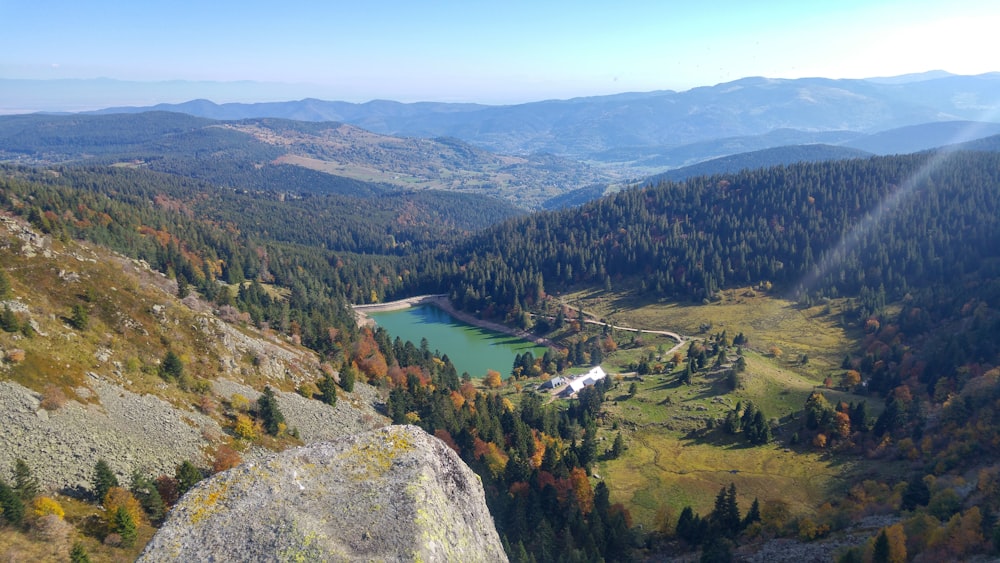
The mountains to the east and west of the geological faults that we call the Vosges and the Black Forest, have arisen almost 1500 metres. The stretch of land which is the Upper Rhine Rift through which the Rhine flows today crumbled, thereby creating the present geological formation. A great part of the Northern Black Forest is composed of mixed sandstone and is not good for agricultural purposes. The Middle and Southern Schwarzwald mountains have hummocky topography which makes it easier to cultivate and ideal for settlements.
Whereas the Romans didn’t find this area interesting due to geo-political reasons, settlements began to grow in the 8th and 10th century in the Black Forest mountains, valleys and spurs, The first houses were the cloisters. In the Middle Ages the Schwarzwald was known for its silver and lead mines. The burning ovens in the Neuenburger area show that even in the Celtic times iron was an important ore. The spas (thermal baths) of Baden Baden, Badenweiler, Bad Krözing, Bad Bellingen use the healing wetness which comes from the mountains. A combination of a mild climate, fresh mountain air make a lot of places in the Black Forest mountains ideal for reconvalescence of people with pulmonary illnesses (Kurorte). The Schwarzwald, Black Forest or Foret Noir, as the name suggests, is made of pine and beech forests. During the early industrialisation, a big part of the forests were used for producing charcoal, glass-manufacture, mining for ores, and wood for home-fires needed in the bigger towns of Freiburg and Basle. When the forests were denuded, spruce saplings were planted which changed the face of the Black Forest to its present form.
Why do people seek the Waldeinsamkeit, the stillness of the forest? The answer lies perhaps in a poem penned by L. Tieck. It crops up at the beginning at the end of a stanza. Tieck uses this in varying form thrice in his story ‘The blond Eckbert.’ The opening lines of poem no. 5 in Eichendorff’s cycle ‘Der Umkehrende’ runs thus:
WaldeinsamkeitDu grüne Review…
——————————
THE CHARMS OF SPOKEN ENGLISH (Satis Shroff)
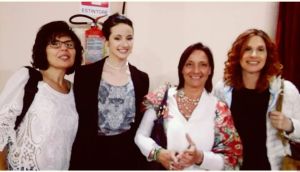 |
| Lovely Italian ladies from Crispiano at the Neruda Award Ceremony |
Whether you hear Radio Nepal, the BBC, CNN or the Voice of America, there’s no such thing as ‘correct spoken English.’ There is no standard as such, even though the Queen’s English is regarded as a measuring yard. As George Bernard Shaw said, ‘No two British subjects speak exactly alike.’ Whether you have a Cambridge, Oxford, Cockney, provincial or colonial dialect is immaterial. You don’t have to be shamed of it. A Rato Bangala1 or St. Xavier’s slant is just as good as a Texan drawl.
Being understood is the point. You try to express, not impress. You speak presentably. There are naturally circles wherein your choice of words should stamp you as a ‘cultivated person as distinguished from an ignorant one’. That is where either one puts one’s best foot forward and throws in all the rules of rhetoric and the performing arts and makes a show of it, or perhaps makes a fool out of oneself. But that’s another matter.It all depends upon whether you’re from Ireland, Scotland, Wales, the British Commonwealth or some other Anglo-American area. Or even Kathmandu or Timbuktu.
Take two German friends of mine, Monica and Yogi Rudolph, who visited Nepal sometime ago. Monica’s an English teacher who now works in a bookstore, whereas Yogi is a trained-geologist. When they came in contact with Nepalese people in the countryside during their Jomsom trek or even in Kathmandu, Moni put on her best English accent, with the result that the people didn’t understand her at all. Yogi, however, with no English background, spoke Ginglish (German-English) with the verb always at the end of the sentence, in a slow soft-spoken manner and always managed to get his message across.
And that’s the point. You have to adapt yourself every time to the person you’re speaking with, not only in your choice of words and expressions, but also pronunciations. With an academician you could afford to adopt an elaborate style, letting your fantasy run, dashing out warmed-up idiomatic and current expressions and bombastic words with a bit of Latin and French thrown in. But when you’re talking to a simple, honest-to-God farmer or Sherpa along the trail, you have to switch into a simple, restricted language, without jargon. Yet there are people who go through life without having understood this simple rule.
A foreign student from India at our local Freiburger Goethe Institute once asked an American girl: ‘Vat is the medium auf instrukshun in yer kuntry?’ The baffled American student’s eyebrows shot up like a pair of boomerangs and her mouth opened. She hadn’t understood a word. One must admit that it does take quite sometime before you can train your ears to a new accent or a new dialect. The Indian student had asked: ‘What-is-the-medium-of-instruction-in-your-country?’ It must have sounded like a sack of potatoes being unloaded on a wooden floor. What he meant was, ‘In which language do you teach in the USA?’
Some features of English as spoken in the Indian subcontinent are: ‘Arre baba, he-be-God or Vat-are-you-doing? Most travellers to the subcontinent are confronted with the question: ‘Where-you-come-from? Or ‘Which kuntry you are from?’
India has over 50 million jobless people, in comparison to Germany which has 4.5 million, and the frustration in applying for government jobs goes thus: ‘Indian gormenta, no gooda gormenta. Apply, apply , no reply. British gormenta, gooda gormenta. Morning apply, evening reply’.When I listened to Elvis Presley singing ‘You ain’t nothin’ but a hound dog,’ which is a case of double negation, my aunt, Mrs. Dong, who was a teacher with King Edward’s Own Gurkha Rifles stationed in Hong Kong, would say, “Eh pagla! Don’t listen to such American songs. You’ll spoil your English.’’
In Germany for instance, the people in Baden have a totally different accent and dialect than those coming from Bavaria or even from Schwabenland. As a foreigner you tend to understand the conversation only in snatches. The Badener pronounces the word ‘sympathy’ as though it were ‘symbady’. Which incidentally reminds me of some of my Newari college friends in Kathmandu who have problems with the word ‘that’, which is pronounced ‘dat’, (der = there, hot =what, iz = is). Newari is a language with monosyllables and is spoken in the Kathmandu valley. It makes the language colourful though. Patience and goodwill helps. Or as the Germans say: one has to speak with one’s hands and feet. And gesticulate a lot.
Just as English is taught in Nepalese schools by teachers, who have no real contact with England or America or the Anglo-American way of life, there are also teachers in Germany who teach their pupils German-English, with the result that a lot of students have inhibitions about speaking a foreign language, scared that one might make slips. As though to err wasn’t human at all. One must admit that the chances that a German teacher may go to England or the USA, to widen his or her English-horizon, is bigger than that of a teacher in the foothills of the Himalayas in Nepal. As a result, one learns only idioms and expressions that are passed along the grapevine. Expressions that are obsolete in a culture that has remained conserved and isolated. That’s also why Microsoft has different standards of English depending on the country: Australian, Belizean, British, Indian, Irish, Jamaican, Canadian, Caribbean, New Zealand, Philippine, South African, Trinidadian and US American English.
The Banaten Swabians or the Aussiedler, as Russians of German origin are called, also speak a conserved form of quaint German when they come to Germany. The German language has also moved the times, especially after the fall of the Third Reich. The younger ones adapt themselves fast as they visit the kindergardens and schools. The older generations have a tough time integrating themselves in modern western Germany. The German languages is studded with English, Italian and French expressions.
With a hand-held translator you can get funny sentences, for instance: if you try to translate ‘Give me a ring,’ your palm-top might translate in to ‘Geben Sie mir einen ring,’ which certainly doesn’t mean ‘Give me a call.’ During my student days at the Freiburger university I read a message on the university wall which made me chuckle with delight after I’d understood what it meant: how up du high-knee. It means something close to: ‘Get lost!’ Most Germans who don’t know much English want to become strange things. It’s not the post-war complex. It’s just that many English words sound familiar to them and they use them in the German sense of the word.
There’s a famous case of a blonde German Fräulein who goes to a butcher’s shop and says, ‘Can I become a steak?’ The word ‘become’ means ‘to get.’ When a German says, ‘My daughter Gabi goes to the Gymnasium’, it doesn’t mean that she does gymnastics in a hall. I must admit that I’m a great admirer of P. G. Wodehouse and Richard Gordon and in my schools days I’d laughed a lot when I read their books. Then I chanced to get copies of their works in German. The books were well translated but I couldn’t laugh at all. The jokes and the pointe were all lost in translation.
It is remarkable to note that many English words have come to stay in the Nepalese conversation, if not Nepalese literature. Words like: habituated, hobby, compulsory, cinema, TV, entrance-exam, syllabus, boring, restricted, Hollywood, Bollywood etc. The list increases with the passage of time. And time and again people protest in a lot of countries regarding the infiltration of English words in their respective languages.
The French have protested now and again and so have the German and demanded the weeding out of foreign words from their lovely languages. But globalisation makes it impossible to isolate languages, for we all communicate with foreign words, and feel proud of it, nicht wahr? It is just as charming for a German to order a cup of Ilam tea in a restaurant in Namche Bazaar in the local lingo, as for a Nepalese to order a cup of Cappucino in Italian. Es lebe die Vielsprachigkeit.At one time I was with some people from London and Liverpool at a cocktail party and I said I was originally from Nepal.
It was amusing to hear, “Oh, Nepaul?’’ The blonde woman had been raised on Kipling, I presumed, with all those nautch-girls, snake-charmers, sepoys and wallahs.Names are always distorted by foreigners. And so are most words.
During my visit to Ilam in eastern Nepal in 1995, a bus driver used English words with a nonchalance that was really disarming. Words like ‘birik’(brakes), ‘esteering’ (steering-wheel), ‘turuck’ (truck), and his companion who cleaned the car was a ‘kilinder’. On the other hand my German grandma, who watches spy-thrillers in TV, is fond of James Bond whom she calls ‘Rogger Mooray’, because the last letter is always pronounced in the German language, and not silent.
Have you heard a Frenchman speak English? I used to know a young man named Pascal originally from Paris but I’d met him in Neufchateau, and he had the habit of beginning his sentences with: ‘I preferrr…’ in that funny, elaborated French way. When I heard that, I thought the Nepalese school-kids who do the School Leaving Certificate exams were much better off with their knowledge of English as a second language. It’s just that the Nepalese pronounce the words with a Nepalese flair.
Spoken English does have its charming side. You can made it a game to find out the origin of the speaker, for despite the much cultivated attempt to speak a foreign language, you can at most times discern the rough geographical origin of the person talking. And that makes it all the more amusing. Vive la difference!
————————————————————–
About the Author: Satis Shroff has written over a period of three decades, what the Germans would call a “Landesumschau,” for his readers with impressions from Freiburg, Venice, Rottweil, Prague, Paris, London, Frankfurt, Basel and Grindelwald. He has worked with The Rising Nepal (Gorkhapatra Sansthan), where he wrote a weekly Science Spot and editorials and commentaries on Nepal’s development, health, wildlife, politics and culture. He also wrote weekly commentaries for Radio Nepal.
He has studied Zoology & Geology in Kathmandu, Medicine & Social Science in Freiburg, and Creative Writing under Prof. Bruce Dobler (Pittsburgh University) and Writers Bureau (Manchester). He sees his future as a writer and poet. He was awarded the German Academic Prize. Satis Shroff’s bi-cultural perspective makes his prose and poems rich, full of awe, and at the same time heartbreakingly sad. In writing ‘home,’ he not only returns to his country of origin time and again, he also carries the fate of his people to readers in the West, and his task of writing is a very important one in political terms. His true gift is to invent Nepalese metaphors and make them accessible to the West through his prose and poetry.
Satis Shroff writes in German & English.Please read his poems & prose in
* * *
Ort : PH Schreibzentrum, Littenweiler
Belegung: http://www.ph-freiburg.de/studium/creativewriting
A. Thematische Einordnung und spezifische Inhalte der Veranstaltung
Every student has to write when he or she studies at the university. In this course we do the basics of writing techniques which can be used for poetry, microstory, short-story (fiction, non-fiction) writing.
1. Microstories
2. A Cross-pollination of Forms (Imagery, Inspiration, Poetry)
3. The Interview
4. How to gather stories: Notebooks, Journals, Mining Memory
5. Variety in Your Writing
6.Fiction Techniques in Non-fiction Scientific Writing
7. Dialogue and Plot
8. Writing the Short Story
B. Zentrale Lernziele der Veranstaltung: The central aim of this course is to learn the writing techniques mentioned in the course and as a result, the students should be able to attain a certain amount of proficiency in writing poems, lyrics and texts on their own.
Cognitive learning goals: The students learn that writing is a craft, not an art, and write by forming sentences in their minds, adjusting, writing and discovering how to turn the drab (things in life) into the jewel. The students should learn to set a goal (time management) of publishing their verses or prose either on the internet (www.Lulu.com or www.booksie.com
(as PDF) as a printed book and e-book. The publication helps a student to become a specialist in the field of his or her choice.
Affective learning goals: The students will learn to make the precise use of language through text-revisions, and learn to be critical about texts, learn to edit and improve not only their own texts but also those of other writers. To be emotionally attached to words and to use the appropriate words in the best way, for words conjure images, vivid pictures—whether in poetic scenes or in describing an aesthetic product. That’s what we learn in this course, making use of our cognitive learning goals.
What do I expect from you? The desire to develop yourself and be willing to try different genres in creative writing and take your writing further. The ability to work with concentration. The ability to reflect over the themes that we’ve discussed or treated. Flexibility and a fair amount of working under duress (deadlines of budding and professional authors).
C. Aufgaben und Leistungen, die die Studierenden erbringen
Students are allowed to bring in work in progress
Students should make a presentation
Project (book, anthology or Hausarbeit (academic dissertation, short-story, a collection of poems or microstories or both)
Arbeitsaufwand for students ca. 100 hours.
Method and Competence: The lectures will be combined and activated with methods that have the aim to get more out of a theme through brainstorming, group-puzzle and the use of writing templates (eg. software) and take your writing forward.
We’ll be using different learn methods and social forms like writing on your own, sharing your work with a group and presenting it in a peer-plenum to acquire useful feedback.
We’ll be experimenting with stream of consciousness and the interior monologue to enhance your powers of observation and description by starting a Creative Writing diary till the end of the course and beyond. Oscar Wilde said: ‘I never travel without my diary. One should always have something sensational to read in the train.’
We’ll find appropriate triggers to gain access to our memories.
We’ll be using the autogenic exercise to go back to your past as though you’re as a child on film.
You will learn how to make your characters lead their inner lives.
You will learn to train your writer’s ear to transform actual speech into carefully crafted dialogue.
You’ll learn to flesh out your story by creating a portfolio for each character. You will understand how much there is to know about a character that you’ve created.
Social Competence: This course will enable and encourage you to learn in a team
Develop the ability to communicate with others and your readers
Show willingness to co-operate with others by reading and commenting on texts of other writers.
The will to solve a conflict when it appears in the writing class.
The ability to get into the thoughts of the other writers and examine their viewpoint by exchanging texts. The desire to come to an agreement, compromise and look for a mutual solution.
D. Basisliteratur
Allen, R.: Literatur in 5 Minuten. Ein Schnellkurs. Zweitausendeins Frankfurt. 2002.
Bernays. A., Painter, P. : What if? Harper Collins Publishers. New York. 1990.
Millner, C.: Write From the Start. Simon and Schuster. 1992
Stein, S.: Write pro fiction. Das Erfolgsprogramm für Schriftsteller. Zweitausendeins Frankfurt. 2002.
Truss, Lynne.: Eats, Shoots & Leaves. Gotham Books. 2004
http://www.dobler’s dozen
* * *
Review: THE GURKHAS (Satis Shroff)Review: The World Beyond the Mountains (Satis Shroff)
Byron Farwell: The Gurkhas, Penguin 1985, London, 317 pages, ISBN o-14-007569-0
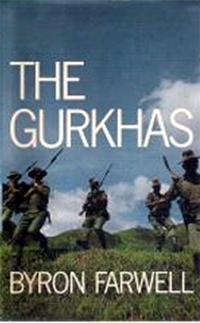
‘The Gurkhas’ is a history of the finest infantrymen in the world who come from a country where ‘It is better to die than to be a coward,’ and where most bear the name Bahadur, which means ‘courageous,’ and who carry out their mission with the help of the deadly, curved kukris.
‘Ayo Gurkhali!’ Here come the Gurkhas! Is a battlecry that makes their enemies in battle wince, and sometimes abandon their weapons to save their dear lives. Younghusband marched unopposed into Lhasa on August 3, 1904 with his Gurkhas. During the Falkland War the Argentines fled when they realized that they were being outflanked by the Gurkhas.
Byron Farwell narrative about the Gurkha battalions and their military engagements are enhanced by citations from the books on the same, making it a jolly reading material. The readability score is good and the book is studded with historical photographs of the Gurkhas’ acts of gallantry.
Farwell served as an officer in North Africa and Italy in the Second World War and later also in the Korean War. He has travelled more than a hundred countries. His other books are: The Man Who Presumed, a biography of Sir Richard Burton bearing the title ‘Burton,’ Prisoners of the Mahdi, Queen Victoria’s Little Wars, the Great Boer War, and a social history of the Victorian and Edwardian Army with the title ‘For Queen and Country.’ In 1986 Viking published his ‘Eminent Victorian Soldiers’ and he’s a Fellow of the Royal Society of Literature since 1964.
Farwell’s book is a comprehensive history of the lives and achievements of the Gurkha soldiers of Nepal in the Indian and later British Gurkhas after India gained its independence, and about the extraordinary relationship which existed, and apparently still exists between the British officer and Johnny Gurkha. Since the author served as an officer in the North Africa and Italian campaigns in the Second World War, it’s only natural that he enthuses about the cheerful, stocky hillmen of Nepal.
As to the sources used by the author, he has relied much on regimental histories and the autobiographical works of officers who served with the Gurkhas. Farwell has used the Indian Army’s English annual journal called ‘The Gurkha.’Besides that he used ‘The Khukri,’ a similar journal published by the British Brigade of Gurkhas and interview with some officers. It might be mentioned that not all acts of bravery were noted in the past. Citing an item on a Gurkha from the Third Battalion of the 8th Gurkha Rifles, he mentions: ‘Particular mention must be made of the courage of 86600 Rifleman Punaram Pun. Unfortunately he died. We never know how Pun distinguished himself.
The book has 29 chapters devoted to war and peace in Nepal, the role of the Gurkhas in Delhi, made famous by Attenborough’s ‘Gandhi’ film. The chapter on Character and Characteristics deals with how Johnny Gurkha ticks. There are chapters devoted to Gurkhas in Afghanistan in the olde days, the North East Frontier, how Gurkhas are recruited, the role of the Nepalese warriors in World War I (France), Gallipoli, Suez and Mesopotamia. A chapter on Gurkha officers, relationships, Nepalese festivals (Dasain and Tihar), home, family, preparing for battle (World War II), the North African War in the Second World War, South East Asia, Italy, retreat from Burma, Chindits, India’s independence and partition, the savage wars of peace, Borneo, reduction of force and retirement. The role of the Gurkhas today and tomorrow. The book has a four-point appendix and the last one is about the Gurkha tribes.
In the aftermath of the Falklands, the author stated, ‘there will continue to be a place for these Nepalese mercenaries in the British Army. In a world unwilling to abandon war as a means of settling disputes the Gurkhas will always play a role as warriors or as peace-keepers.
The steadfast, stocky, courageous Gurkhas have never deserted their British officers. But two Brit officers Major Boileau and Captain Butcher who deserted their Gurkha soldiers at the Residency, were court-martialled and cashierd.
The first edition of the book was published by Allen Lane in 1984 which was after the Falkland war. Farwell writes:’Mercenaries have been in bad odour in recent years, but the trade is an ancient and enduring one. He cites A.E. Housman who had praise for them in ‘Epitaph on an Army of Mercenaries:
What God abandoned, these defended,
And saved the sum of things for pay.’
In his book Farwell is conspicuous for his branding the Gurkhas as ‘mercenaries’ throughout the text. During the Falkland War the British MoD was politically embarrassed by the Argentinians at the UNO that the Brits were using ‘mercenary Gurkhas’ for the battle in the Malvinas. This made the Brit government declare with emphasis that the Gurkhas ‘were an integral part of the British Army. If that was so why did Johnny Gurkha receive only half the pay of a Britsh Tommy all these years? Why weren’t the children of the Gurkhas allowed to go to British schools to earn their GCE ‘A’ levels? Generations of Asian schoolkids domiciled in England have been passing the exams and studying in British colleges and universities. Why not the Gurkha school-kids? When you ask such questions you either get a diplomatic silence or some silly excuse about a British-Nepalease Treaty dating back to 1816 forgetting that we’re in the 21 century, in here and now in the UK.
The sad part of the Gurkha-story is that the Brits never intended to integrate the generations of Gurkhas, who served in Britain’s Army and fought its wars, into the British society. This issue has always been taboo in British military circles. The Gurkhas should die serving the Queen and the Union Jack but they should return to Nepal when their service contract was over, much like Helmut Kohl’s Turkish guest-workers who were invited to Germany to run the factories for the German males had died in the war or were crippled and couldn’t work. Kohl hoped that the Turks would return to their homes. The Turks, Italians, Spaniards and Portugese weren’t obedient, disciplined and loyal like the Gurkhas. They knew what democracy was and that they had rights to live in Germany. The Brits sent the Gurkhas home to Nepal whenever there was disagreement. You could court martial a Gurkha for disobedience, but the so-called Gastarbeiter (guest-worker) in Germany weren’t soldiers and nothing could subordinate them. They fought for their rights, like the second generation of workers’ children who were born in Britain. The Gurkhas were left alone. Not one Brit officer came forward to fight for the cause of their oh-so-heroic Gurkhas because there were scared stiff that the MoD would fire them. It was a strange ‘special’ relationship between the Gurkhas and their officers. Not a single officer worth his grain opened his mouth. It took a Joanna Lumley, a woman, to corner a minister about the Gurkha Issue with a running camera.
Whereas Byron Farwell doesn’t look at the Gurkhas from the anthropological view, he does compare the Gurkhas among themselves in terms of tribes and clans, which is typical of colonialists out to seek the best of Mongolian hillmen from Nepal and to turn them into obedient, loyal fighting-machines. In this process he quotes from the sources listed on the last few pages of his book. What emerges is a Gurkha profile as an ideal rifleman who’s brave, tough, patient, adaptable, skilled in fieldcraft, proud of his military record and unswerving loyal towards their bread-givers: the MoD in London and Delhi.
It is said that the Gurkhas can stand hardships and anything, except abuse.
And yet they have been abused by both the Nepal Durbar and the British Ministry of Defence, despite the Gurkhas’ ‘selfless devotion to the British cause, which can hardly matched by any race to another in the whole world history of the world. Why they should have thus treated us is something of a mystery.’ It was General Francis Tuker who said that. Farwell adds: ‘Indeed; and a mystery which needs to be explored, for while the Brits undoubtedly had enormous affection for the Gurkhas, they failed in the event to match their loyalty.’
The author’s purpose in this book was to bring in a historical account of the Gurkhas from Nepal and how and where they fought under the Union Jack from Queen Victoria’s times till the Falkland War, for that’s where the book ends. The reader learns a great deal about the Gurkha regiments and Brigades in British India, independent India and the Gurkhas in Britain and Hong Kong, along with the role of the Gurkhas in Britain’s skirmishes around the world. Since this book was published in 1984 an up-to-date sequel is imperative to keep the readers abreast with new developments. Nevertheless, the author has done a good job in presenting the Gurkhas to readers around the globe for they have fought Britain’s wars in France, Gallipoli, Suez and Mesopotemia in the First World War and in almost every front in the Second World War from Singapore to Italy and North Africa.
What does it mean to a Gurkha to be refused at a Gurkha recruiting depot? It means an anticlimax and shame to a prospective soldier. Most young men bid farewell to everyone they know in their villages in a solemn ceremony. The mother presents him a handful of coins which he distributes to his girl-friends who’re waiting along the path. Failed recruits don’t wish to return home. I knew a young man, a school drop-out, who went to the British Camp in Dharan (Nepal) was rejected, and instead of returning home in shame and ignominy, he chose to work as a school-teacher in a local school in the hills, and a year later passed the recruitment test to join the British Gurkhas. He returned home after two years with lots of presents for his family and relatives, and wore immaculate Hong Kong tailor-designed suits, and went for walks much like the elderly veterans in his hometown. According to Farwell ‘every young man who set off for the recruiting depot was confident of acceptance.
In reality the story of the Gurkhas isn’t always courage and glory. In letters home during the First and Second World Wars many Gurkhas wrote to their parents, friends and girl-friends about the loneliness, absurdity and fear in the trenches but these letters were opened, censored and never reached their destinations for they were withheld by the MoD, and now given free for public viewing in the archived of the British Museum.
The Gurkhas as a theme are topical, much like the US Navy Seals and the French Foreign Legion, and the significance of the Gurkhas and their tribulations and woes at the hands of London’s MoD which has, in recent times, led to court cases of the Gurkhas versus the MoD. This book provides a good background of how the Gurkhas, as a cheap mercenary force to fight Britain’s battles in the world fronts, on a hire-and-fire basis. To this end, young Nepalese men join the Gurkhas and are exposed a world of new experiences, depending on whether they are doing guard duty in front of the Buckingham Palace or elsewhere. In order to adapt they had only to do as they were told; the army took care of them.
Were the Gurkhas integrated into British lifestyle? The answer is no. They were confined to their barracks. If they ever fought against against discrimination, they were sent back to Nepal. They lived a parallel life, divided by culture and religion. There has always been a latent racial prejudice in the ranks of the officers and the MoD. British identity was seen in the 1950s in racial terms but in the 1990s Britishness became simply the ability to tolerate different religions, and ethnicity as an affirmation of who they are. Whereas outside the Gurkha barracks, youths of Asian and Carribean origin who were genuine British passport holders, fought for their political and social rights in Britain, and helped to generate political struggles against discrimination by creating bridges across ethnic, racial and cultural barriers, the Gurkhas have always had a ghetto existence in their British barracks, aloof from what went on politically in the United Kingdom. When the MoD came up with cuts in military manpower, the loyal, courageous, cheerful, obedient Gurkhas were obliged to accept it as their fate as ‘mercenary soldier’ who could be hired-and-booted out as the situation demanded. No insurance, no NHS-benefits, no accommodation outside the barracks. No chance to mingle and fraternize with the British civilians. They were kept, and still are, like the asylum-seekers in Switzerland. At 10 pm they have to be in their barracks.
There were always human resources in the hills of Nepal for the next battle anywhere in the world. Despite their sterling qualities, the Gurkhas have been given a raw deal in terms of remuneration in the British Army. Whereas the migration to Britain made central in the curriculum of secondary schools, whereby pupils are expected to learn core ‘Brit’ values such as tolerance, respect, freedom of speech and justice and learn of the shared British heritage, the Gurkhas and their children still feel alienated in Britain, and left out from the bebefits of the civil society. For its fighting force Britain recruits young, enthusiastic men from Nepal but what happens to the Gurkhas who have developed gerontological problems? The NHS turns a deaf ear and the MoD too.
The first migrants landed in Britain in 1948 and integration of Asians from India, Pakistan and later Bangladesh as well as West Indians has partially worked well. The interracial marriage between black-white is high at 40% but Asians prefer not to marry white women and Asian women are married off by their parents with partners from their former home countries or males who’ve grown up in Britain. The West Indians are also well represented in politics (MPs or councellors). Asian children are regarded as being diligent and assimilation in education is good. Education and employment go hand in hand. The hardworking Asians possess business acumen. Underlying racial prejudice still exists in the UK which is regarded as a ‘mind matter’ which no law can possibly change, much like in Germany where neonazis are facing trial for killing migrants who were shop-owners.
The Gurkhas are known for their ability to adapt to different combat environments in the jungle, desert, craggy terrain, and he can also adapt in Britain’s jungle of concrete, given the opportunity by their officers, MoD and Her Majesty’s government. It’s high time the Gurkhas came home to Britain to roost with all the benefits that the British society has to offer for they have been ignored and treated as foster-children for too long. A start has been made by Gurkhas who have appointed solicitors to fight for their rights in British courts. It took long time for the Gurks, as they are fondly called by the Brits, to react in the British society. The Gurkhas are catching on and are absorbing so-called ‘alien, unregimental ideas’ which are democratic, humane and beneficial to them.
Why do the British use Nepal as a human warehouse for its wars? Kalunga (Nepal) has gone in the annals of British Military History as a bloody affair, and the British suffered greater casualty than the Gurkha, even though the latter were outnumbered. Balbahadur lost 520, the British lost 31 officers and 750 other ranks. But in the end Ochterlony defeated the Gurkha General Amar Singh at Jaithak, and once again in a decisive battle at Malaun. What followed was the Treaty of Segauli signed on march 4,1816. Nepal was obliged to give up the provinces of Kumaon and Gharwal, as well as the lower Terai. Moreover, Nepal had to accept a British Resident and the most curious and important clause in the Segauli Treaty was that it gave the ‘British the right to recruit Nepalese subjects.’ What remains of the two battles are two tiny obelisks erected by the Brits at Kalunga (20 km from the India border-town Raxaul) dedicated to General Rollo Gillespie and his British and Indian dead. The other obelisk is dedicated to their gallant adversaries. ‘The love affair’ between the Brits and the doughty little Mongolian hillmen had begun and has lasted 194 years.
Farwell writes: ‘the Gurkhas being mercenaries, enlisted for pay. Indeed the pay, low though it was, seemed attractive to those from a land where there is little hard cash. They also wanted to leave ‘the confined and restrictive life of the mountain village and to see the world beyond the mountains.
A scheme to admit Gurkhas to military institutions of higher learning began in the 1950s. A line boy officer cadet Bijay Kumar Rawat was the best overall officer cadet at Sandhurst.
Ironically enough in recent times the Brigade of the Gurkhas have been deployed in the Hindukush, and a Brit Gurkha officer was disgusted that a Johnny Gurkha took out the head of a Taliban he’d slashed with his khukri. During the World War II the war in Burma was brutal. A patrol of the 4/8th Gurkhas brought back to camp the severed head of a Japanese officer. Lieutenant Colonel Walter C. Walker, the battalion commander, had it nailed to the trunk of a tree near his bunker. The head had a ‘wispy beard and a drooping moustache.’
Byron Farwell speaks of the ‘zest of the Gurkhas in their pursuit of the retreating Japanese has been compared to that of terriers after rats.’ One British commander offered a reward for each head brought in and one Gurkha havildar returned with six bloody ears in his haversack. The commander asked where the heads were. The Gurkha replied, ‘Too heavy to carry, sahib.’
At another skirmish forty Japanese ran into a Gurkha trap and the Lieutenant Commander McCready of the 1/10th Gurkhas commented: ‘There was a great blooding of khukris and ..no wounded were brought back.’ Lalbahadur Limbu received an immediate award of the Military Cross.
Are told by veterans in the hills of Nepal. What the Gurkha did in Afghanistan was to re-live one such story he’d heard in his childhood. It was the British officers who encouraged and rewarded such feats and took delight in them and bragged about their men at the mess-halls and officer’s clubs, and they still do it.
Recently, a pensioned old Gurkha was going for a walk and was robbed by a white gang who took away the Rolex watch he was wearing. There’s no human warmth and consideration among the urban gang members, and they’re known to be ruthless and cold. A Gurkha’s past isn’t interesting to them and they don’t care what happens to them. Their cool heroes are Scarface and Goodfellas. Welcome to Britain today. Daylight break-ins muggings and car thefts are common in parts of London. Freiburg (Germany), where I live is known for its bicycle thieves. When it comes becomes dark the police in Brixton are unwilling to go to the trouble spots.
* * *
Irene Nemirovsky: COLD BLOOD (Satis Shroff)This time Satis Shroff’s Zeitgeistlyrik deals with a female writer who was deported to Auschwitz where she died:Nemirovsky who has written Suite Francaise, David Golder, Le Bal (including Snow in Autumn),The Courilof Affair, All Our Worldly Goods is a brilliant story teller with an in-depth understanding of the hidden flaws and cruelties of the human heart. She writes about what people do to us and what time does to people..
* * *
Key words: Germany youth today: chic,modern,well-informed,well-traveled,world open, well-educated,peaceful,tolerant,miteinander, togetherness,altruistic,global actors,respect for others..
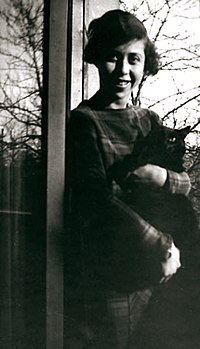
Irene Nemirovsky: COLD BLOOD (Satis Shroff)
Subtitle: Moaning in All Eternity
Six decades ago,
My life came to an end,
In Auschwitz.
I, Irene Nemirovsky, a writer
Of Jewish-Russian descent,
Died in Auschwitz.
I live now in my books,
In my daughter’s memories,
Who’s already an octogenarian,
Still full of love and fighting spirit:
For she fights against
The injustice of those gruesome days.
I was thirty-nine,
Had asthma,
Died shortly after I landed in Auschwitz.
I died of inflammation of my lungs,
In the month of October.
That very year the Nazis deported
Michael Epstein, dear my husband,
Who’d pleaded to have me,
His wife, freed from the clutches
Of the Gestapo.
They also killed him.
My daughters Denise 13,
And Elizabeth 5,
Were saved by friends
Of the French Resistance,
Tucked away in a cloister for nuns,
Hidden in damp cellars.
They had my suitcase with them,
Where ever they hid,
Guarding it like the Crown Jewels.
To them it was not only a book,
But my last words,
That I’d penned in Issy-l’Eveque.
I wanted to put together five manuscripts
In one: Suite Francaise,
That was my writer’s dream.
I could put only
‘Storm in July’ and ‚Dolche’
Together.
I passed away early in August 1942.
Too early.
In my two books I’ve written
About the flight of the Parisians
From the victorious Germans,
The awful situation in an occupied hamlet.
Small people and collaborators,
Who’d go to extremes
To save their skins,
Like ants in a destroyed ant-hill.
It’s sixty years hence,
But my work hasn’t lost ist glow,
Like the lava from an erupting volcano.
You can feel its intensity,
When an entire nation
Was humiliated and had to capitulate,
Losing its grace, dignity and life.
I was born in Kiew,
Fled to Paris via Finnland and Sweden,
After the Russian Revolution.
I was a maniac,
When it came to reading,
Had a French governess,
Went often to the Cote d’ Azure and Biarritz.
I studied literature in Sorbonne in 1919.
Shortly thereafter,
I began to write:
About my Russian past,
My wandering years.
The colour of the literature I wrote
Is blood from an old wound.
From this wound I’ve drawn
The maladies of the society,
Human folley.
I was influenced by writers,
From Leo Tolstoi to Henrik Ibsen.
An unhappy childhood,
Is like when your soul has died,
Without a funeral:
Moaning in all eternity.
* * *
A Writer’s Journey (Satis Shroff)
Satis Shroff Nominated For German Engagement Prize 2011 Berlin Mittwoch, 14. September 2011 20:31:52 deutschen engagementpreis 2011, MGV-Kappel, university freiburg, germany …
PRESSEMITTEILUNG: Berlin, 05. September 2011 Herr Satish Shroff , aus Freiburg-Kappel, ist für den Deutschen Engagementpreis nominiert! Dies wurde ihm durch ein Schreiben des „Projektbüros Deutscher Engagementpreis“ in Berlin mitgeteilt. Herr Shroff wurde aufgrund seiner Auszeichnung für ehrenamtliches, bürgerschaftliches Engagement 2010, von der Stadt Freiburg, Dezernat III durch Herrn Gerhard Rieger für den Deutschen Engagementpreis vorgeschlagen. Sein Einsatz als „Mittler zwischen den Kulturen erfährt durch diese Nominierung eine besondere Anerkennung.
Dies erfreut nicht nur Herrn Shroff, sondern zeigt auch, dass das Thema Integration ausländischer Bürger öffentlich wahrgenommen und als preiswürdig eingeschätzt wird. Geprägt durch die eigenen Erfahrungen als Migrant, der auf die Menschen fremder Kulturen zugeht, will er das Verständnis, den Respekt, die Achtung und die Neugier für Menschen verschiedener Kulturen wecken Er selbst, aktives Mitglied und Schriftführer des heimatlich, traditionellen Vereins „Männergesangverein Liederkranz Freiburg-Kappel“ sagte in seiner erfrischenden, ehrlichen Dankesrede bei seiner Auszeichnung für ehrenamtliches, bürgerschaftliches Engagement 2010: „Ich bin in Kappel so herzlich aufgenommen worden und fühle mich hier „sauwohl“. Ich kann nur jedem empfehlen in einen Verein einzutreten.“ Seine Publikationen im Internet sind einfühlsame, aktuelle Geschichten, die dem Leser neue Sichtweisen anbieten, andere Menschen mit Ihren Traditionen und Bräuchen anzunehmen, verstehen und zu respektieren. Der Deutsche Engagementpreis ehrt freiwillig engagierte Organisationen, Unternehmen und Personen. Die Auszeichnung wird verliehen vom Bündnis für Gemeinnützigkeit, einem Zusammenschluss von großen Dachverbänden und unabhängigen Organisationen des Dritten Sektors sowie von Experten und Wissenschaftlern. Förderer des Preises sind das Bundesministerium für Familie, Senioren, Frauen und Jugend (BMFSFJ) und der Zukunftsfonds der General Deutschland Holding AG. Der Deutsche Engagementpreis wird in den Kategorien Gemeinnütziger Dritter Sektor, Einzelperson, Wirtschaft, Politik & Verwaltung sowie der diesjährigen Schwerpunktkategorie Engagement von Älteren vergeben. Während eine Experten-Jury die Preisträger der einzelnen Kategorien bestimmt, können sich auch die Bürger selbst an der Auswahl der Sieger beteiligen:
Sie wählen im Herbst den Gewinner des mit 10.000 Euro dotierten Publikumspreises mittels Online-Voting-Verfahren auf der Website http://www.deutscher-engagementpreis.de aus einer Vorauswahl von ca. 20 Projekten. Projektbüro Deutscher Engagementpreis c/o Bundesverband Deutscher Stiftungen I Mauerstr. 93 I, 10117 Berlin Tel. 030–89 79 47-61 I Fax -71 I info@deutscher-engagementpreis.de www.deutscherengagementpreis. de
* * *
Grusswort zum Tag der Einbürgerung (Satis Shroff)
Stichwörter: Migration, Nepal, Himalaya, Schwarzwald, Freiburg; Integration: Freiburg, Deutschland, Verein,
Gesellschaft, Miteinander, Toleranz, Gegenseitige Respekt
INTEGRATION: Der Mensch hat ein Bedürfnis nach sozialer,
geistlicher, sprachlicher, sinnentfaltender Integration. Integration schafft ein WIR Gefühl durch Eingliederung in die einheimische Gesellschaft. Es ist ein geben und nehmen; und es soll ein Leben und Leben lassen sein. „Sie sind so wunderbar integriert,“ sagte neulich Frau Martina Ruch von Freiburger Protokoll-Referat zu mir. Vielleicht war das der Grund warum ich zu der Zentralen Feierlichkeit am Tag der Deutschen Einheit von 2. bis 4. Oktober 2013 in Stuttgart eingeladen wurde. Als Teil der Bürgerdelegation Baden-Württemberg durfte ich mit dem Landesvater Herrn Winfried Kretschmann Maultaschen essen. Das Salz in der Suppe waren die Stuttgart 21 Protestler. Ah, so ist eben die Demokratie. Ein Festakt in der Liederhalle Stuttgart und Empfang mit dem Bundespräsidenten Herrn Dr. Joachim Gauck waren die Highlights, gefolgt vom Empfang des Oberbürgermeisters der Stadt Stuttgart, Herrn Fritz Kuhn im Rathaus. Für mich waren es eine Ehre und ein Privileg dabei zu sein. Wie ich es bei der Preisverleihung für bürgerschaftliches Engagement 2010 erwähnt habe, kann ich nur jedem empfehlen in einen Verein einzutreten: Sport, Kultur, Gesang, Tanz, Musik, je nachdem was Sie können. Bleiben Sie nicht isoliert in ihrem Kämmerlein. Werden Sie aktiv! In der Familie finde ich es wunderbar Austauschschüler zu haben. Da wird französisch, italienisch und englisch gesprochen. Eine kulturelle Bereicherung für alle Beteiligten. Zur Integration muss ich sagen, dass ich in Littenweilers Thomas Morus Burse gleich Anschluß bekommen habe in Form von zwei Kommillitonen: Gabi Knittel und Joseph Moosmann. Sie ist Grundschullehrerin geworden und er ist jetzt ein Pfarrer. An Weihnachten haben Sie mich in Ihr Elternhaus eingeladen. Josephs liebe Mutter sagte sogleich: ‚O Satisle!’ Die Jahre gingen schnell vorbei und nun bin ich auch Freiburger. Ein Schwarzwaldmädel habe ich geheiratet mit Magister Artium in Volks- und Völkerkunde. Ein zweites Magister in Ethik und wir haben vier Kinder. Ein Häusle haben wir auch gebaut. Wir essen badisch-nepalesisch-italienisch und singen gerne daheim. Und ist das Dorf auch noch so klein, er hat `nen eigenen Verein. Ich bin aktiv als Schriftführer und Sänger im Männergesangverein-Kappel; für die Freiburger Nepalese Association und MGV-Kappel betreue ich die Facebook-Seite. Ich liebe Kappel und das malerische Dreisamtal und habe gute Freunde und Nachbarn und ich fühle mich geborgen. In der englischen Schule war unser Motto: Omnia bene facere. Inzwischen mag ich unsere Vereinsmotto: In Freud und Leid Zum Lied bereit. * * *
MIGRATION: In Darjeeling habe ich ein Britisches Internat besucht und war mit Shakespeare, Keats und Yeats vetraut. Mittlerweile auch mit Goethe, Brecht, Grass Raniczki und Ortheil. Nach dem Schulabschluß Senior Cambridge studierte ich Zoologie und Botanik und wurde erfolgreicher Journalist und schrieb für Radio Nepal, The Rising Nepal, San Francisco Chronicle und The Christian Science Monitor. Dort habe ich über den Bergtourismus, Himalayaökologie, Kultur und Literatur geschrieben. Massentourismus und Umweltprobleme waren schon damals in den 70er und 80er Jahren ein Thema. Yeti-Expeditionsmitglieder , Gletscherforscher und Wildlife-Experten habe ich auch interviewt. Der Mensch ist von Natur aus ein Kulturwesen. 1975 kam ich nach Freiburg und habe hier weiter studiert: Medizin, Sozialarbeit und Creative Writing in Freiburg und Manchester.
Nun bin ich Dozent an der Akademie für medizinische Berufe, VHS-Freiburg, VHS-Dreisamtal. Ich habe auch in Basel und an der Freiburger Uni also Lehrbeauftragter gearbeitet. Demnächst auch Creative Writing an der PH. Es macht mir Freude mit Jungen- und Älteren Generationen zu arbeiten. In der Erwachsenenbildung benutze ich häufig Assoziationen, da die Erwachsenen Studenten sehr viele Bilder, Wörter, Informationen in sich mitbringen (Lebenserfahrungen). Ich bin in Deutsch, Englisch, Nepali und Hindi zu Hause.
Schon als Medizinstudent war ich aktiv also Kontaktperson für das AAA (Akademisches Auslandsamt. Heutzutage heißt es International Office). Ich habe DAAD und von Humboldt- Stipendiaten aus Nepal und Indien betreut. Ich pflege weiterhin Kontakte zu diesen etablierten Akademikern per Facebook und über E-Mails. Beim Horlemann Verlag, Bad Honnef, habe ich zwei Sprachkunden zur Nepali-Sprache veröffentlicht, die für Auslandsmitarbeiter der GTZ, des Goethe Instituts, des DAAD, der Carl-Duisberg- Gesellschaft etc., die entwicklungsbezogene Aufgaben in Nepal durchführen, bestimmt sind.
Satis Shroff 1 Kommentar German Unity Day (Satis Shroff) Freitag, 15. November 2013 12:58:21 green city freiburg, german unity day, stuttgart, satisshroff …
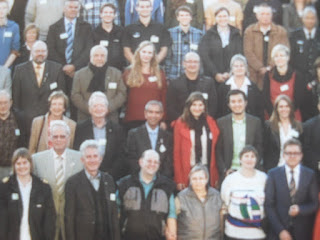
Germany: UNIQUE THROUGH UNITY (Satis Shroff)
I was very happy when I received an official invitation from the State Ministry of Baden-Württemberg (BW) with the text: Minister Mr. Winfried Kretschmann would be delighted if you could represent our state Baden Württemberg as a member of the BW-delegation at the central celebrations on the occasion of the German Unity from the 2nd till the 4th of October 2013 in Stuttgart.
The programme comprised an official greeting by the Ministerpräsident of Baden-Württemberg and his wife Mrs. Gerlinde Kretschmann at the town council place. This was to be followed by a mutual Swabian Maultaschen luncheon. After that a tour to the Mercedes-Benz Museum which was to end with a reception given by the Landtags-president of BW Mr. Guido Wolf. The first day of the invitation was to end at the joyous area called the ‘Ländermeile’ where all the states of the German federation were to present their respective culture and specialities. Well, it was a privilege and honour to receive this invitation.
I and the other members of delegation were greeted heartily by Ms. Jasmin Harz (Ministry of the State of BW) at the Maritime Hotel, Seidenstrasse 34. It was great to say that I came from the ‘Green City Freiburg.’ Marlena Maerz 19, a Badische Zeitung reporter accompanied us, as she wanted to write about our impressions of the celebrations. But since she didn’t have the accreditation at the security check, she was obliged to report from outside the police cordon. The same thing happened to a journalist named Nicole from the renowned German mag Der Spiegel.
Stuttgart had ordered tight security with the Bundesgrenzschutz, private security men and women, and the local police posted at regular intervals along the route. Even the boy and girl scouts had to stand at attention in front of, and inside, the Stiftskirche. Red carpets had been laid around the church as walked on them and took our seats inside. We had to wait a bit for the VIPs Kterschmann (Green), the German Federal President Gauck and the Chancellor Merkel (CDU) to arrive.
The church bells rang, the national hymn was played and the Stift’s philharmonic orchestra and everyone stood still. The German anthem was to play a big role on this day also in the Liederhalle (Hal of Songs). The mess began with the song ‘Nun singt ein neues Lied dem Herren’ with text by George Thurmaier 1965, and music by Loys Bourgeois 1551. The congregation was greeted by the Landes-bishop Dr.h.c.Frank Otfried July followed by a music premier by Kay Johannsen ‘In deinem Lichte sehen wir.’ The blonde, short-haired Stephanie Roser danced with Levent Gürsoy a theme with the title ‘Zeugnisse.’ Then came the reality part with the theme ‘Experiences of Lack of Solidarity,’ which was followed by ‘Not all youth have good perspective today’ supported by Klaus Sommer and Anja Olbrich and the Girls’Cantorei from the Domkirche St. Eberhard.
Archbishop Robert Zollitsch warned the people that ‘we shouldn’t take the German Unity for granted.’ What I found authentic was when Zollitsch, referring to the times of the holocaust, said, ‘When I was a 6 years old, I saw people who were 16 to 60 years being killed. I grew up in a concentration camp with my Grandma. We managed to escape to Hungary to an evangelical community. Wounds need time to heal but the scars remain. To build an Europe together we need a lot of energy and power. Experience has shown us that God helps us. It was the people who brought re-union to our two countries and we have to learn to have faith in God. Peace and God be with us.’
The theme ‘People with disabilities want to be in the middle of the society’ was presented by Bernd Schatz and Sandra Walther with the musical assistance of the Freiburger Domsingknaben and the rather leptosome but dashing Kappelmeister Boris Börmann who was conducting the choir, evoked Heimat-feelings in my heart, since my children also sing the same choir. Ach, the children grow up so fast. Thereafter, the programme changed towards reconciliation in politics between Germany and France with the ‘Border as a Barrier’ presented by Alfons Ruf and Helga Wollbaum. A schoolgirl from the German-French School spoke about togetherness, and of hope, in her bi-lingual school. The difficult times after the end of the World War II, and life in Saabrücken. Many people in France had shown empathy their former foes in recent times. The Freiburger Domsingknaben sang a song composed by Frederick W. Faber (1814-1863) ‘Es ist Weite in Gott’s Gnade.’ Germany and France: From Foreigners to Friendship was the next theme followed by ‚Herr, deine Gute’ sung by the Stuttgarter Kantorei. What I personally found disconcerting was the fact that the Brits, French and Germans killed each other through the use of military technology in both the World Wars, and when it was over prayed to the same God in the graves and killing-fields of the dead soldiers and civilists. The same holds for Hindus (India) and Muslims (Pakistanis and Afghans), Sunnites against Shiites, Israelis versus Palestinians. More songs in prise of God followed sung by the Freiburger and the Stuttgarter choirs. The sign of peace was enhanced with music by J. S. Bach (1685-1750): Dona nobis pacem from the h-major mass. There was bright sunshine outside and we walked to the sound of Virgil Fox (1912-1980). Then it was time for Germany’s politicians to mix a bit with the masses. Chancellor Merkel said that even years after the unity of the two Germanys ‘there are still big differences between the East and West parts of Deutschland.’ In her opinion there’s still a lot to be done. Mr. Kretschmann (Green) said that the Federal Government should give the necessary assistance to all the fed states to carry out their respective financial projects. It has, and will be, lopsided as ever with Bavaria and BW financing the poorer fed states. But Kretschmann didn’t have an answer for the donor states (BW and Bavaria) that are permanently playing the role of the eternal donors to the other poorer states in the German federation. During the central celebrations on the Day of German Unity the motto ‘Unique Through Unity’ became reality with ample speeches, theatre, dances and multi-medial performances everywhere in Stuttgart. We drove to the Culture and Congress Centre Liederhalle where the state-father of Baden-Württemberg Mr. Winfried Kretschmann gave a speech. Thereafter, he handed a symbolical baton to the head of government of Lower Saxony Mr. Stefan Weil (SPD), who’s administrative period begins in November.
The Federal President Joachim Gauck 73, began his speech with the history of the two Germanys in East and West, that had a common cultural heritage and history, but were separated due to power-political reasons. A case of capitalism versus communism ensued. It took time to grow and come together, and cost us perseverance, resistance and stamina. However, it was worth the effort: 23 years later after the unification we live in Deutschland where democracy and solidarity plays a big role. We know through the East and West Germany history, as well as the history of Baden-Württemberg, how enriching it is when an entire country develops out of many parts. Joseph Hayden’s ‘Kaiserquartett’ haunted the performances in the Liederhalle. President Gauck said, ‘We have to believe in what we can do, and do what we believe.’ He demanded more activity from the forthcoming government in a world full of crises and break-ups. ‘Germany is not an island,’ he said and demanded that Germany should work more towards solutions and share its burden in politics, economy and military conflicts. Furthermore, he said that Germany should not make itself small, not go around risks and solidarity. He expressed his wish that Germany should fight for security of data in connection with the NSA espionage affair. (At the moment France is shocked and disgusted at NSA’s activities). The politicians should keep a balance between security and freedom, and data-security should be just as important as ecological protection. In the evening we, from the BW-delegation, were invited to a reception by the Oberbürgermeister to take part in the cultural shows and culinary specialities from Stuttgart and its partner cities. DUNDU, a group of action-performers from Stuttgart, initiated the programme. There was non-stop music on the first-floor performed by Hope Theatre Nairobi & Friends. In the festival hall you could hear the strings of the harp, played by Johanna Geuppert. On the second floor was a speaking theatre of the music-theatre-class (Stuttgart Music School). The walking act, with the magician Riklini, was rather long, followed by Pater Noster, a variety show staged by Duo desolato. The reception of the Öberbürgermeister took place in the Big Hall with the furious Interpretation Orchestra of Culture, and the beautiful Murphy Singers. I thought we’d landed in Crazy Horse Paris: here was beauty and aesthetic. The title of the piece was ‘Auf de schwäb’sche Eisebahne.’ ‘Welcome to Stuttgart’ turned out to be a greeting by Fritz Kuhn, the Green Oberbürgermeister (mayor) of Stuttgart was interesting but didn’t have the quality of a Herr Gauck, but since he was from Stuttgart, he had a certain and cheekiness. He pleaded to the Berlin politicians, who were also present, to bring at least 5-days for a cultural visit to Stuttgart. ‘Let the magic work on you’ was the motto of Falabares meet CoK, a contact jugglery. Falabares tried to make us speechless without using a language and to make us amazed with soap bubbles. The next attraction was ‘We are the World’ sung by the chic Murphy Singers, accompanied by the Orchestra of Cultures. Fritz Kuhn had the last word and off we went to the reception on the third and fourth floors HANZ, a young blonde man with asymmetrical haircut, moderated and organised the programme. The delegation had a photo session with the Landtagspresident Guido Wolf MdL at the open-air arena of the Mercedes-Benz Museum. Being a German of Nepalese descent, it was an excellent opportunity for me to experience how Stuttgart celebrated the German Unity Day. It was also a good occasion to meet the Federal President Dr. Joachim Gauck, Winfried Kretschmann (Green) and to see the Chancellor Merkel in action.
To enjoy the Swabian Maultaschen (dumplings) at the Schillerplatz with Mr. Kretschmann, dinner with President Gauck at the Hebel Hall, and with Fritz Kuhn, Stuttgart’s Green mayor. It was a privilege and honour and I’d like to thank Frau Jasmin Harz and the other ladies and gents from the State Ministry (Stuttgart) for making this unforgettable event possible. It was a pleasure to meet and exchange views with the delegates from other parts of the country. There were also emotional moments in the Liederhalle, when pictures were shown on the screen: of Germany in smoke and ashes, the construction of the Berlin Wall, the memorable images remain carved in our memories. East and West were represented by the moving music, how a nation was divided (Mauerbau) and how the two nations were united after the fall of the Berlin Wall (Mauerfall).
These pictures combined with the music evoked strong emotions and moved you to tears, as they did in the case of the many delegates from the former GDR and BRD. It was a perfect scenario and script. We are a nation, was the message. Zusammen Einzigartig. Unique through Unity. This motto was understood by the delegation members who carried them in their hearts. Dankeschön Deutschland! Keine Kommentare Samstag, 9. November 2013 20:33:03 Took the ICE to Basle(Switzerland) and seven minutes in the Katzenberg tunnel and out we came to Weil am Rhine. I sauntered around at the Herbstmesse after crossing the Rhine bridge, where Helvetia was sitting on a bank and gazing in the distance. 1 Kommentar Samstag, 9. November 2013 20:26:50 Took the ICE to Basle(Switzerland) and seven minutes in the Katzenberg tunnel and out we came to Weil am Rhine. I sauntered around at the Herbstmesse after crossing the Rhine bridge, where Helvetia was sitting on a bank and gazing in the distance. There were autumnal leaves everywhere you went, and you could smell the aroma of cinnamon, sandalwood incense sticks, Basler leckerli, Magenbrot, excellent mountain cheese that you could taste, the aroma of raclette and risotto, Schwyzer bacon and the sound of children gleefully screaming as the play-rockets and caroussels did their rounds.
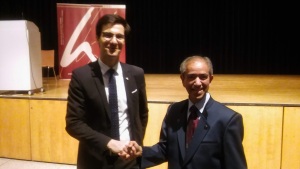
Historical Kaufhaus (Satis Shroff, Freiburg) Freitag, 1. November 2013 18:41:34 integration, green city freiburg, Migration, new German citizens … I’ve been invited to give a speech at the Historical Kaufhaus in Freiburg by Green City Freiburg on the occassion of ‘Tag der Einbürgerung.’ Looking forward to it. When I think of it, it sure was a long time when I came with the Lufthansa to Frankfurt from Kathmandu, then with a smaller jet to Stuttgart, and by train to Freiburg. I spent my first night at Hotel Roseneck, near the Loretto Strasse. Ah, my first evening in Germany.

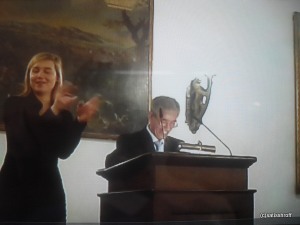
It being a Sunday, I had to wait till the next day to start my German lessons at the Goethe Institute, which was near the railway-station. My friend Dirk Schneider’s a father physician turned wine-grower) bought the building which is a small castle, and turned it into a Weinschlössle (a wine-castle).It’s a great place to go for a drink with your friends (Wilhelmstrasse 19) The Freiburger Jazz House is right near to this place. Keine Kommentare Historischen Kaufhaus (Satis Shroff, Freiburg) Freitag, 1. November 2013 18:37:58 miteinander, peace, new German citizens, germany … Have been invited to give a speech at the Historical Kaufhaus in Freiburg by Green City Freiburg on the occasion of ‘Tag der Einbürgerung.’ Looking forward to it. When I think of it, it sure was a long time when I came with the Lufthansa to Frankfurt from Kathmandu, then with a smaller jet to Stuttgart, and by train to Freiburg. I spent my first night at Hotel Roseneck, near the Loretto Strasse. Ah, my first evening in Germany. It being a Sunday, I had to wait till the next day to start my German lessons at the Goethe Institute, which was near the railway-station. My friend Dirk Schneider’s father (physician-turned-wine-grower) bought the building which is a small castle, and turned it into a Weinschlössle (a wine-castle).It’s a great place to go for a drink with your friends (Wilhelmstrasse 19). The Freiburger Jazz House is right near it, if you prefer cool sax s sounds.. Keine Kommentare Dienstag, 22. Oktober 2013 16:17:05 Germany: UNIQUE THROUGH UNITY (Satis Shroff) I was very happy when I received an official invitation from the State Ministry of Baden-Württemberg (BW) with the text: Minister Mr. Winfried Kretschmann would be delighted if you could represent our state Baden Württemberg as a member of the BW-delegation at the central celebrations on the occasion of the German Unity from the 2nd till the 4th of October 2013 in Stuttgart. The programme comprised an official greeting by the Ministerpräsident of Baden-Württemberg and his wife Mrs. Gerlinde Kretschmann at the town council place. This was to be followed by a mutual Swabian Maultaschen luncheon. After that a tour to the Mercedes-Benz Museum which was to end with a reception given by the Landtags-president of BW Mr. Guido Wolf. The first day of the invitation was to end at the joyous area called the ‘Ländermeile’ where all the states of the German federation were to present their respective culture and specialities. Well, it was a privilege and honour to receive this invitation. I and the other members of delegation were greeted heartily by Ms. Jasmin Harz (Ministry of the State of BW) at the Maritime Hotel, Seidenstrasse 34. It was great to say that I came from the ‘Green City Freiburg.’ Marlena Maerz 19, a Badische Zeitung reporter accompanied us, as she wanted to write about our impressions of the celebrations. But since she didn’t have the accreditation at the security check, she was obliged to report from outside the police cordon. The same thing happened to a journalist named Nicole from the renowned German mag Der Spiegel.
Stuttgart had ordered tight security with the Bundesgrenzschutz, private security men and women, and the local police posted at regular intervals along the route. Even the boy and girl scouts had to stand at attention in front of, and inside, the Stiftskirche. Red carpets had been laid around the church as walked on them and took our seats inside. We had to wait a bit for the VIPs Kterschmann (Green), the German Federal President Gauck and the Chancellor Merkel (CDU) to arrive. The church bells rang, the national hymn was played and the Stift’s philharmonic orchestra and everyone stood still. The German anthem was to play a big role on this day also in the Liederhalle (Hal of Songs).
The mess began with the song ‘Nun singt ein neues Lied dem Herren’ with text by George Thurmaier 1965, and music by Loys Bourgeois 1551. The congregation was greeted by the Landes-bishop Dr.h.c.Frank Otfried July followed by a music premier by Kay Johannsen ‘In deinem Lichte sehen wir.’ The blonde, short-haired Stephanie Roser danced with Levent Gürsoy a theme with the title ‘Zeugnisse.’ Then came the reality part with the theme ‘Experiences of Lack of Solidarity,’ which was followed by ‘Not all youth have good perspective today’ supported by Klaus Sommer and Anja Olbrich and the Girls’Cantorei from the Domkirche St. Eberhard.
Archbishop Robert Zollitsch warned the people that ‘we shouldn’t take the German Unity for granted.’ What I found authentic was when Zollitsch, referring to the times of the holocaust, said, ‘When I was a 6 years old, I saw people who were 16 to 60 years being killed. I grew up in a concentration camp with my Grandma. We managed to escape to Hungary to an evangelical community. Wounds need time to heal but the scars remain. To build an Europe together we need a lot of energy and power. Experience has shown us that God helps us. It was the people who brought re-union to our two countries and we have to learn to have faith in God. Peace and God be with us.’ The theme ‘People with disabilities want to be in the middle of the society’ was presented by Bernd Schatz and Sandra Walther with the musical assistance of the Freiburger Domsingknaben and the rather leptosome but dashing Kappelmeister Boris Börmann who was conducting the choir, evoked Heimat-feelings in my heart, since my children also sing the same choir. Ach, the children grow up so fast.
Thereafter, the programme changed towards reconciliation in politics between Germany and France with the ‘Border as a Barrier’ presented by Alfons Ruf and Helga Wollbaum. A schoolgirl from the German-French School spoke about togetherness, and of hope, in her bi-lingual school. The difficult times after the end of the World War II, and life in Saabrücken. Many people in France had shown empathy their former foes in recent times.
The Freiburger Domsingknaben sang a song composed by Frederick W. Faber (1814-1863) ‘Es ist Weite in Gott’s Gnade.’ Germany and France: From Foreigners to Friendship was the next theme followed by ‚Herr, deine Gute’ sung by the Stuttgarter Kantorei. What I personally found disconcerting was the fact that the Brits, French and Germans killed each other through the use of military technology in both the World Wars, and when it was over prayed to the same God in the graves and killing-fields of the dead soldiers and civilists. The same holds for Hindus (India) and Muslims (Pakistanis and Afghans), Sunnites against Shiites, Israelis versus Palestinians.
More songs in prise of God followed sung by the Freiburger and the Stuttgarter choirs. The sign of peace was enhanced with music by J. S. Bach (1685-1750): Dona nobis pacem from the h-major mass. There was bright sunshine outside and we walked to the sound of Virgil Fox (1912-1980). Then it was time for Germany’s politicians to mix a bit with the masses. Chancellor Merkel said that even years after the unity of the two Germanys ‘there are still big differences between the East and West parts of Deutschland.’ In her opinion there’s still a lot to be done. Mr. Kretschmann (Green) said that the Federal Government should give the necessary assistance to all the fed states to carry out their respective financial projects. It has, and will be, lopsided as ever with Bavaria and BW financing the poorer fed states. But Kretschmann didn’t have an answer for the donor states (BW and Bavaria) that are permanently playing the role of the eternal donors to the other poorer states in the German federation.
During the central celebrations on the Day of German Unity the motto ‘Unique Through Unity’ became reality with ample speeches, theatre, dances and multi-medial performances everywhere in Stuttgart. We drove to the Culture and Congress Centre Liederhalle where the state-father of Baden-Württemberg Mr. Winfried Kretschmann gave a speech. Thereafter, he handed a symbolical baton to the head of government of Lower Saxony Mr. Stefan Weil (SPD), who’s administrative period begins in November.
The Federal President Joachim Gauck 73, began his speech with the history of the two Germanys in East and West, that had a common cultural heritage and history, but were separated due to power-political reasons. A case of capitalism versus communism ensued. It took time to grow and come together, and cost us perseverance, resistance and stamina. However, it was worth the effort: 23 years later after the unification we live in Deutschland where democracy and solidarity plays a big role. We know through the East and West Germany history, as well as the history of Baden-Württemberg, how enriching it is when an entire country develops out of many parts. Joseph Hayden’s ‘Kaiserquartett’ haunted the performances in the Liederhalle. President Gauck said, ‘We have to believe in what we can do, and do what we believe.’ He demanded more activity from the forthcoming government in a world full of crises and break-ups. ‘Germany is not an island,’ he said and demanded that Germany should work more towards solutions and share its burden in politics, economy and military conflicts. Furthermore, he said that Germany should not make itself small, not go around risks and solidarity. He expressed his wish that Germany should fight for security of data in connection with the NSA espionage affair. (At the moment France is shocked and disgusted at NSA’s activities). The politicians should keep a balance between security and freedom, and data-security should be just as important as ecological protection. In the evening we, from the BW-delegation, were invited to a reception by the Oberbürgermeister to take part in the cultural shows and culinary specialities from Stuttgart and its partner cities. DUNDU, a group of action-performers from Stuttgart, initiated the programme. There was non-stop music on the first-floor performed by Hope Theatre Nairobi & Friends. In the festival hall you could hear the strings of the harp, played by Johanna Geuppert.
On the second floor was a speaking theatre of the music-theatre-class (Stuttgart Music School). The walking act, with the magician Riklini, was rather long, followed by Pater Noster, a variety show staged by Duo desolato. The reception of the Öberbürgermeister took place in the Big Hall with the furious Interpretation Orchestra of Culture, and the beautiful Murphy Singers. I thought we’d landed in Crazy Horse Paris: here was beauty and aesthetic. The title of the piece was ‘Auf de schwäb’sche Eisebahne.’ ‘Welcome to Stuttgart’ turned out to be a greeting by Fritz Kuhn, the Green Oberbürgermeister (mayor) of Stuttgart was interesting but didn’t have the quality of a Herr Gauck, but since he was from Stuttgart, he had a certain and cheekiness. He pleaded to the Berlin politicians, who were also present, to bring at least 5-days for a cultural visit to Stuttgart. ‘Let the magic work on you’ was the motto of Falabares meet CoK, a contact jugglery. Falabares tried to make us speechless without using a language and to make us amazed with soap bubbles. The next attraction was ‘We are the World’ sung by the chic Murphy Singers, accompanied by the Orchestra of Cultures. Fritz Kuhn had the last word and off we went to the reception on the third and fourth floors HANZ, a young blonde man with asymmetrical haircut, moderated and organised the programme. The delegation had a photo session with the Landtagspresident Guido Wolf MdL at the open-air arena of the Mercedes-Benz Museum. Being a German of Nepalese descent, it was an excellent opportunity for me to experience how Stuttgart celebrated the German Unity Day. It was also a good occasion to meet the Federal President Dr. Joachim Gauck, Winfried Kretschmann (Green) and to see the Chancellor Merkel in action. To enjoy the Swabian Maultaschen (dumplings) at the Schillerplatz with Mr. Kretschmann, dinner with President Gauck at the Hebel Hall, and with Fritz Kuhn, Stuttgart’s Green mayor. It was a privilege and honour and I’d like to thank Frau Jasmin Harz and the other ladies and gents from the State Ministry (Stuttgart) for making this unforgettable event possible. It was a pleasure to meet and exchange views with the delegates from other parts of the country. There were also emotional moments in the Liederhalle, when pictures were shown on the screen: of Germany in smoke and ashes, the construction of the Berlin Wall, the memorable images remain carved in our memories. East and West were represented by the moving music, how a nation was divided (Mauerbau) and how the two nations were united after the fall of the Berlin Wall (Mauerfall). These pictures combined with the music evoked strong emotions and moved you to tears, as they did in the case of the many delegates from the former GDR and BRD. It was a perfect scenario and script. We are a nation, was the message. Zusammen Einzigartig. Unique through Unity. This motto was understood by the delegation members who carried them in their hearts. Dankeschön Deutschland!

Germany: Unique Through Unity I (Satis Shroff,Freiburg) Samstag, 12. Oktober 2013 13:50:18 satisshroff, blackforest, germany united, zusammen einzigartig …
Stuttgart & the Pan-European Picnic (Satis Shroff) En route from thre Stiftskirche to the Swabian-style Mauntaschen cusine with Winfried Kretschmannn at Stuttgart’s Schillerplatz, I saw a man in the bus who looked rather familiar. Ah, I thought, that must be the former Ministerpresident Lothar Späth, now an elderly, thin elderly man.
I got up, walked up to him and asked him if he’d like to sit. I introduced myself and we started talking. I asked if he remembered the Royal visitors from Nepal in Stuttgart when Ms. Margot Busak was the then honorary consul of Nepal (Now it’s Ms. Ann-Kathrin Bauknecht).
‘Yes, I remember her, ‘ he said. He even remembered the royal couple from the Himalayas King Birendra and Queen Aishwarya. I’d been invited by Ms. Busak and we’d gone to the Graf Zeppelin Hotel to see-off the Royal entourage on their way to Munich from Stuttgart. The Nepalese journalists took some photos and I accompanied Ms. Busak in her luxurious Mercedes to the hotel, greeted the King and Queen, and from there to the Echterdingen airport. The Bundesgrenzschutz (BSG) played the anthems of Germany and Nepal and the Royal pair walked on the red carpet to the three green BSG-helicopters. Mr. Späth, Ms. Busak and I returned to Stuttgart.
A few days earlier the German President Richard von Weizsäcker and his wife Marianne had graced the reception held by the Nepalese Royals at La Redoute in Bonn. Bonn was the capital of Germany then. Petra Kelley and General Bastian, Professor Grizmeck and a host of well-dressed Gurkhas in civil from the British Rhine Army, and accompanied by their wives in colourful saris, also attended the reception. I asked Mr. Späth, ‘You went to Jena after the Berlin Wall fell, didn’t you?’ ‘Oh, yes! I went to Carl Zeiss Jena’ he replied with sparkling eyes and a boyish grin. ‘How did the East Germans receive you? ‘I had to fire 17,000 of them. You can imagine how it was. Not an enviable job, eh? You know, they said, ‘We’ve survived the World War I and World War II. But we can’t survive Lothar Späth,’ and laughed. In those days 20,000 East German people worked at Carl Zeiss in Jena. Lothar Späth, who was the Ministerpresident of Baden-Württemberg from 1978 till 1991, became the CEO of the newly founded Jenoptik in 1991. * * * The great masses of people…will more easily fall victims to a great lie than to a small one. (Mein Kampf, A.H.). I spent New Year in a former Stasi-hotel in Thuringia with some West German and East German friends. It was a great, old-fashioned party. There was a nice feeling of togetherness and it was only a matter of time when all the Stasi barbed wired posts would be pulled down. We also went to Meiningen. Along the Bavarian-Thuringia border you could see the barbed wires and automatic guns lest you dare escape from the communist state called the German Democratic Republic. There was a memorial with the words of Konrad Adenauer (CDU): Hier ist Deutschland noch geteilt. Auch drüben ist Deutschland.
The entire German people behind the Iron Curtain beckon us, not to forget them! We shall not remain idle and not rest till Germany is united again in peace and freedom. This memorial was erected on 13.08.1981, on the 20th year of the Berlin Wall by the CDU. East German road-runner Trabis in the background at Thuringia A friend of mine named Heinz Handke had bought a few Trabbis from the former East Germany and his East-German girl-friend Kirstin showed my a Gulash-Kanone outside the old Stasi-hotel. The Gulash is actually a Hungarian meat-dish cooked with a lot of onions and spicy paprika. It’s great to eat this on a cold day, and is generally served as a soup with bread.
The Gulash cannon was a big metal Russian Army field cooking device with a built-in chimney. Kirstin also showed me the endless Stasi barbed-wire fence separating Thuringen from Bavaria. The German Democratic Republic had another political, military, economic system, along with its own communist society. It’s 23 years after the fall of the Berlin Wall, and it shows that you can’t isolate, imprison and lie to a people of a separated state forever. A start was made on August 19, 1989 when the Hungarian Democratic Movement invited people to a pan-European picnic on the East-West border. The demonstration had been registered but lasted only a few hours (from 12 noon till 3pm) and that was the beginning of a walk to freedom towards the west (Austria) for hundreds of East German citizens. That was the dawn of democracy and then end of the German Democratic Republic. The border was closed soon thereafter by the GDR, but the fact remains that the picnic planners had beaten the civil servants of East Germany at their own game in a police-state where security and bureaucracy accompanied you in every step of life. The picnic organisers had acquired all necessary permits and permissions from the official side. And the police officers at the Hungarian-Austrian border were helpless and awed at the phenomenon unfurling before their very eyes. Old chancellor Helmut Kohl has gone on record in a parliamentary statement made on November 8, 1989:…Germany’s future lies within a peaceful order which will unite the people and nations of our continent in freedom. To us, the European dimension of the German question implies national unity and European unification. Coming back to the Day of German Unity celebrations at the Schillerplatz in Stuttgart, it has taken on a new meaning for the members of the Baden-Württemberg delegation and the nation. In the middle stood the memorial built by the Danish sculptor Betel Thorvaldsen. The poet Friedrich Schiller had been a pupil at the Hohen Karl School from 1773 till 1780. As we relished the Swabian Maultaschen (dumplings with spinach) below the statue, I spoke with other delegation members who were heroes from real life. The burly Thorsten Ahl (German Rescue Society) had done duty along the Elbe river in Bavaria when the town and homesteads went underwater, and he’d saved lives. But as fate would have it, he suffered from a stroke after the mission. He said, ‘I lost my speech.’ And there he was telling his story in a controlled and quiet manner. Another countryman Wolfgang Käßgang (dentist) had saved a 20-year of woman from drowning. Wolfgang Urban, a robust academician (theologist) who sat near me said about Mr. Kretschmann, ‘As a young man he used to distribute pamphlets for the Maoists.’ Mr. Urban went on to say with a hearty laugh, ‘I also come from the mountains. 850 metres high. Schwäbische Alb.’ Well the celebrations in Stutgart are long over and what catches our attention at the moment is what’ll happen to the Lampedusa issue, the Syrian chemical weapons (Nobel Prize for Peace went to the OPCW) and the Bishop Tebarts van Elst of Limburg with his building extravaganza and a pope in the Vatican who preaches austerity, spirituality and humbleness. In Britain more and more people are feeding themselves at the kitchen for poor people of the Brit Red Cross.
* * *
HOLOCAUST & KZ SYNDROME: Lest we Forget (Satis Shroff)
Samstag, 14. September 2013 17:42:30 foret noire, shoa, peace, schwarzwald …
Commentary:
| Klassifikation nach ICD-10 |
| F62.0 |
Andauernde Persönlichkeitsänderung nach Extrembelastung
– Persönlichkeitsänderungen nach Konzentrationslagererfahrungen |
| F43.1 |
Posttraumatische Belastungsstörung |
The German pope has indeed damaged the pontificate and the church, even though it was Cardinal Hoyos who’d ignored what sort of people the four members of the Pius-Brotherhood were. The four had been excommunicated in 1988. These bishops, especially Bishop Williamson, have emphatically stated that the misery and pain of the Jews and the holocaust was just fantasy, and that the Nazis hadn’t used Zyklon B to gas anyone.
My respect goes to Cardinal Lehmann who, at least, spoke of a ‘catastrophe for the survivors of the Holocaust’ and went so far as to demand an apology from the highest instance. Freiburg’s Cardinal Zollitsch took two whole weeks to react, but came up an invitation for the Central Council of Jews, to talk about the matter which is a step in the right direction. Normally, the Vatican is something of a master in presenting its own multimedia profile. This time there was a hitch. The Vatican didn’t even think it was relevant to inform the bishops of France and Switzerland about the Pius-Brotherhood quartet, which was banned by Pope Johannes Paul II.
Be that as it may, I found Chancellor Angela Merkel reacted swiftly and showed statemanship and political correctness, when she talked with the German pope about the holocaust lies spread by Bishop Williamson, and the contorted version of the bible interpreted by the late Marcel Lafebvre (1905-1991), who made the Jews responsible for the murder of Jesus. The Pius-Brotherhood founded in 1970 has 500 priests and 600,000 followers. The politically correct attitude towards Israel of the German government under Merkel has grown out of the ashes of the holocaust. In the past, around the thirties, it was easier to be silent for the majority of the Germans, when their Jewish neighbours were being insulted, beaten, humiliated, discriminated by Hitler’s brown shirts, and later accompanied by force to the concentrations camps and eventually to the gas-chambers. Zykon B was a dreaded name in those days. It was only after the World War II, when it became public, that many Germans realised what an infamy and act of criminality and inhumanity its armed forces and civil servants had meted out to its Jewish citizens, gypsies (Roma and Sinti), POWS from other conquered countries and their very own disabled persons, whose right to exist and live as they pleased was challenged by self-styled members of the Aryan race, who wanted to eliminate, what they called ‘worthless lives.’ Hitler wanted to create a new Aryan race with blondes and blue-eyed Germans and a start was made at Schönborn, where young virile males and females were allowed to mate for the Fatherland. Many of the children from these anonymous intercourses still live today, and would like to know who their parents were, for the offsprings were given to German families or grew up in Scandinavian countries.
We have but to read Bertold Brecht’s book ‘Furcht und Elend im Dritten Reich’ to understand that angst was the order of the day, when even fathers had to fear their own sons because the latter were active members of Hitler’s youth and boy-scout organisations. They had to show allegiance to their Führer and no one else. It was in this atmosphere, charged with fear of denunciation, that the people lived their normal lives in wartime Germany. In the post-war period it wasn’t any better for the Germans who lived in the German Democratic Republic under Erik Honneker, where kilometres of barbed-wire, Alsatian dogs, manned by the Volks police and deadly automatic guns that fired at the touch of a hidden wire, and where the Big Brother Stasi (secret state security) was always watching its citizens. You couldn’t trust anybody in those days. I remember when I was a medical student I met a blonde girl in the Anatomy class and she looked around furtively said in a whisper: ‘I’m from the DDR, but please don’t tell anyone about it.’ She’d fled to the west. She was safe here but her fear accompanied her like a shadow. I reassured her and we are still good friends and laugh about those times. Even Günter Grass, who won the Nobel Prize for Literature, has a tough time fighting with himself regarding his past, and he mentions it in his onion-experience book, the English version of which hit the bookstands last year.
The Berlin Wall and Checkpoint Charlie are replete with historical human tragedies of people who wanted to flee from a totalitarian state. Families were separated and the expression ‘Ossie and Wessie’ was normal for a long time, even after the Berlin Wall fell on November 11,1989. Two nations, two governments, two different ideologies but the same people.
The fall of the Berlin Wall was one of the most emotional and historical greatest events in this world, not only for us Germans, but also for the former East Bloc countries. In this post-Perestroika period, the new and growing memberships in the European Union and Nato are proof enough of the desire, yes the craving, to be a part of Europe and the Upper Hemisphere, for the East Bloc countries were economically developing countries, made kaput by the communist and socialist apparatus. Despite the negative headlines and banners in the media, even the former East German cities are mobilising themselves against the Neonazis, and others who still believe in the yesteryears of so-called Aryan culture and power. Wolfgang Tiefen, SPD, Minister of Transport in Germany was right when he said: ‘It isn’t enough if one thinks in silence. In many cities there are attempts by rightists to show their presence. To counteract this move, one has to go to the streets. Dresden has shown us how to treat the Neos.’ It must be mentioned that at the autobahn resting place Teufelstuhl (Devil’s Chair), near Jena, Neonazis brutally beat up the people who’d taken part in the big demonstration, and some of them had serious injuries. Apropos injuries, the survivors of the holocaust and their children, and their children’s children still suffer from the traumatic experience in the concentration camps, and have fear of death and loss. In a clinical study carried out in 1968 in Holland with 800 Jewish patients, who’d survived the holocaust, had what is known as the KZ-syndrome, which is a combination of problems. The patients had chronic angst (fear), cognition and memory disturbances, heavy chronic depression, changes in personality and identity, emotional regression, psychosomatic problems like phobia, hallucination and showed signs of agitation. They also suffered from psychosis, restlessness, sleep disturbances, nervosity, diffuse fear of new persecution, permanent exhaustion and loss of vitality due to weight loss caused by persecution. It is interesting to note that similar symptoms were to be seen in the case of survivors of Hiroshima, POWs and among the persecuted Afro-American and native Indian tribesmen of the USA. A study about the syndromes of Guantanamo survivors on the part of NANDA is pending. Whereas a lot of the KZ survivors had the syndrome, there were those who were spared such traumatic experiences and syndromes in a new, safe country like the USA, Holland, Canada and Israel, even though they had a latent phase in old age, because the Jewish migrants have a close social network in which rituals and symbols play a big part. Nevertheless, all holocaust survivors have a lot of things in common: the experience of helplessness, terror, deprivation, loss of social groups (friends, family, relatives) and profession.
Added to this plethora of problems is the survivor-guilt. When you’ve underdone such hardships and experiences you tend to ask yourself: Why did I survive and not the others?. You have painful pictures of death and the unfinished process of mourning for your near and dear ones who’d died in the concentration camps or were shot by a firing squad.
When a Jewish survivor of the holocaust gets a cancer tumour, it brings up memories of the holocaust because of the loss of hair due to the intake of cyclostatica during treatment, thus baldiness gives you the feeling of being imprisoned again in an institute. The fear of death creeps up slowly and the hospital clothing remind you of the KZ prisoner’s striped dress. The loss of hair imparts a feeling of loss of identity. So the diagnosis cancer develops further in your mind to become a personal holocaust.
The question is: have we Germans learned from the lessons of the past? One thing we should have learned after having survived the Third Reich and World War II is never to be silent when the rights of humans are being trampled, and look the other way. As long there’s democracy, there’s also the right to view one’s personal opinions in matters pertaining to politics, culture and religion. In diesem Sinne: Vive la difference! In Luzern you can see a Pandora’s Box, the contents of which was long in the hands of a Swiss Red Cross nurse named Elsbeth Kasser, who’d worked in the concentration camp Gurs, located in Southern France. It’s a box full of 150 pictures, works of art by interned Jewish artists.
The photographs and KZ artistic drawings, sketches are being exhibited at Luzern’s Historical Museum. The title is appropriate: Hinschauen—nicht wegschauen, which means, Look at it, don’t look away. The KZ prisoners, who were transported to the Vernichtungslager by the Nazis, had pleaded to the nurse Elsbeth Kasser: ‘Swiss Sister, tell about it in your country, tell what happened here to the world.’ 1943 was long ago, but it was in 1989 that she showed the works to others. Frau Kasser died in 1992. She’d brought a little joy and support in Gurs and was ashamed of what the Nazis had done to the people she’d begun to like: transported to the camps of elimination, never to return and see the light of the day, never to breathe like you and me, never to live with their families and friends. Uprooted brutally, undergoing suffering, maltreatment, experiencing cold, hunger, deprivation and dying miserable deaths in concentration camps, eradicated like rodents. Precious human souls, who’d lived in Barrack No. C/6.
* * *
Review: Pascal Mercier’s Nachtzug nach Lissabon (Satis Shroff)

Author: Pascal Mercier, Title: Night Train to Lisabon, btb Verlag, Random House, Munich 2006, 495 pages, price 9.50 euros ISBN-10: 3-422 73436 and ISBN-13: 978-3-442-73436-8
Pascal Mercier was born in 1944 in Bern (Switzerland) and is Professor for Philosophy at the Freie University Berlin. He was awarded the marie Luise Kashnitz-Prize in 2006. Other novels by the author are: Perlmanns Schweigen and Der Klavierstimmer.
The genre is a meditative memoir in which he cleverly mixes the ideas and the plot. The theme is the power of language, the original is in German, published in 2004 and dwells on people’s experiences, wants and who they really are.
The book is divided into four parts: Der Aufbruch (Begin of a journey), the Meeting, the Experiment and finally the Return. The book begins with ‘The day, after which nothing should be the same in the life of Raimund Gregorius began like numerous other days. He came at 7:45 am from the Bundesstrasse and crossed the Kircfeld bridge, which connects the city center to the Gymnasium, as schools are called in Germany and Switzerland (where you can do your ‘A’ levels).
This quest-story is told as a narrative in the past tense, but when the protagonist thinks, the author Pascal Mercier uses the stream-of-consciousness device in italics. The pace of the story is fast in this 496-page book. In a poignant letter to the school rector and Herr Kagi the protagonist Gregorius writes, ‘I’m undertaking a long journey and it’s open when I’ll return and how. I don’t expect you to keep my job for me.’ Further in the letter he writes, ‘You and I, we’re both admirers of Marc Auriel, and you’ll know in these words of his on self-observation: ‘Harm yourself, do harm to yourself and be brutal to yourself, my soul, for you will have no time later to consider and respect yourself. For we all have only a single life, but have done so as though your happiness depended on the other souls..those who are not aware of the earthquakes of your soul are as a consequence unhappy.’
The protagonist of this novel is a Swiss Latin-teacher named Raimund Georgius, 57, and he’s a language genius who teaches in a Gymnasium. About his school charges he thinks: they have so much to live; how open is their future; so many things can happen to them; they can experience so many things.
He gets up from his chair in the middle of his lesson and leaves his class. He’s shocked by the sudden feeling and leaves his carefully constructed Swiss life behind.
It’s raining heavily in Bern and a gust of strong wind turns his umbrella upside down. At this moment he sees a woman in the middle of the bridge who’s reading what looks like a letter. As he approaches her, she crumbles the letter to a ball and throws it. She’s going to jump into the cold, glacial-green waters of the river Aare, he thinks. He drops his teachie-satchel and the exercise books of his school-kids flow out, get wet. She sees him, fetches a pen from her coat and writes a number on his forehead and says in a foreign tongue in French, ‘Excuse me, but I’m obliged not to forget this telephone number and don’t have paper to write it on.’ Both are wet and he says he’s a teacher and takes her to school.
Shortly thereafter, the woman disappears and what remains are her jacket with a book about the charismatic and highly intelligent, politically engaged Portugese physician and resistance-fighter Amadeu de Prado. Gregorius finds a ticked in the book for a night train to Lisabon. He becomes obsessed with the translation of the book. Gregorius is fascinated by the story, especially the views and thoughts of the author.
He translates a passage from the Portugese book into German: ‘If it is so, then we can only live a part of our lives which is within us, what happens to the rest?’
The physician’s book is about the life, love, loneliness and death and all these themes become a passion, as Gregorius, the Swiss teacher begins his search in the inner and the outer world. He wants to know more about this mysterious, fascinating medical doctor. Gregorius seems to realise slowly who the author of this novel really was. But what are the consequences for his own life? Is it possible for a person to leave everything that one is used to behind? Bruce Chatwin did it in his ‘Patagonia’ travelogue and Siddharta Gautama Buddha did it when he left his palace, wife and child, to search for truth.
The ‘Night train to Lisabon’ is not only an epic novel with a lot of voices about a trip across Europe but also about own thoughts and feelings. A book I’d put at the same level as Peter Mathiessen’s ‘The Snow Leopard’ about a journey to Western Nepal on the trail of the elusive snow leopard, a denizen of Dolpo, as well as a journey in the inner world of the author’s friend George Schaller, a Zen-Buddhist.
Raimund Gregorius boards the night train to Lisabon spontaneously and leaves behind his teachie-life into the unknown. Jeremy Irons does justice to the role of Raimund Gregorius, and the viewer-cum-reader can put the puzzle together piece for piece, and experience the moving, revolutionary life of Dr. Amadeu de Prado, which is stuffed with political and emotional intrigues at the time of the Portugese Revolution in the 1970s.
Gregorius himself discovers love in Lisbon and his journey becomes a search for the reason of his own existence. In the film version of this literature, Jeremy Irons is supported by high-class international stars such as Charlotte Rampling, Bruno Ganz, Christopher Lee, Melanie Laurent and Martina Gedeck. The film takes the essential time for its protagonists and their complex stories. The well-photographed film develops into a philosophical thriller with a poignant critic on the deadly monotony and schedule of everyday life. The book and the film are excellent works of art, and at the same time literary works dripping with tension.
The purpose of the book? This quest book about the protagonist’s fascination for Prado’s story and its poetic insight in 17 year old Prado’s graduation speech, ‘I revere the word God because I love its poetic force’ is remarkable. It reminds me of Arjuna’s rhetoric question to the God Krishna in the ancient Vedic book ‘Bhagavad Gita’ in the battlefield of Kurushetra. Savvy philosophical musings? You’re on the right track. The authors takes you on a journey through memories and philosophical concepts and throws light into his own soul, as well as that of the Portugese physician Prado, who dies in 1973 at the age of 53. Prado is the man Gregorius wishes he could have been. Amadeu de Prado regards life as a deceptive world and the world within ourselves is a delusion, which makes us doubly strangers. These words have a great impact on Gregorius and they make him scan his life, his terrible marriage, his social contacts, and the fact that he has a nickname ‘Papyrus’ for his friends think he lives more in old texts than in the real world. The same argument could be transferred while referring to Facebook or cyber-game addicts,eh?
This philosophical work is topical because it has dialogues, pace and in Prado’s speech he is repelled by the violent subjugation in the name of a complacent God. The death and agony of wars, conflicts in recent times and the vetoes of the powerful nations in escalating such conflicts is one such example. .
* * *
Reviews by Satis Shroff
Review: Love, Money, Home & Chinese Philosophy (Satis Shroff)

Genre: Memoir
Sophie Boswell: The Power of Feng Shui Living Proof. Strategic Book Publishing, NY, 2008, 230 pages, Hardback $ 25,95
The purpose of this book is to give readers evidence of how the ancient Chinese philosophy works, as the author herself is the ‘living proof.’ She’d applied it in her home-setting, relationships and business successfully. It’s a book about change and how to make it happen with you remaining in command. This knowledge is packed in the form of an enchanting love-story after two wrecked marriages, and a third endearing one, full of bliss and passion, thanks to Feng Shui.
Feng Shui? An Asian martial art? No, Feng Shui means ‘wind’ and ‘water’ and is the science of life in harmony with your direct environment. Feng Shui belongs to daily life in China. Wind and water belong to the taoistic knowledge that change is the fundamental principle of the universe. And we humans (and other species) as a part of this universe participate in a dynamic principle and are subject to eternal change. Feng Shui also gives you the opportunity to understand your fellow human being. Which theme belongs to this person? What does he or she have to know or discover? According to Feng Shui, your environ, working place, even your visiting-card reflects your personality. This is more than non-verbal communication. Sofia Boswell uses these ancient Chinese philosophical principles in modern western society and lifestyle with amazing success.
Your inner life begins to influence your outer world in a cheerful, positive way, whereby there’s a reciprocal exchange between the inner and the outer world.
Sophie’s story is topical and begins in Sydney in 1996, she travels through blue Hawaii, Newport Beach, New York and ends in Dubai in 2003. A perfectionist at heart, she doesn’t believe in failure despite setbacks in her business and in her private life. She regards a mistake as a chance to find another way to do and to go about things by using a change in perspective. There’s no room for headlong collisions in life. The gentle power of Feng Shui if often behind her decisions because she has internalised this philosophy.
Sophie’s grandfather was a successful businessman, and she has inherited his business acumen in her genes. Her grandmother, Kathleen Boswell, was a talented portrait painter and musicians, so the grandchild has an artistic streak and plays the piano and even writes lyrics today.
She reveals that the first ten years of her life ‘produced a strong minded individual’ which makes us understand that she didn’t seem to fit in with her peers. She was brought up as a proper English girl with all its connotations. There was ‘pomp and ceremony’ inside her house in far-away Australia but the family didn’t have much money to go with the aristocratic mannerisms. Brisbane wasn’t exactly the Cotswolds and was ‘dry and dusty with poisonous spiders and snakes; flies and mosquitoes came in plagues along with crickets and locusts.’
In addition to demonstrating that Feng Shui works, the narrative is humorous and true.
‘What are the author’s thought?’ you might ask. She does some fast thinking when an annoying man named Prem tells her, after consulting his tatty tarot cards: ‘Your life won’t begin until you’re sixty.’ He says further in his Indian English, ‘Vot you should do it is, is to let go!’ To detach oneself from things that bog us down. He tells her in no uncertain terms that she’ll change her lifestyle, travel and meet people she never dreamed of. All under a new flag.
But why would she want to change anything?
Sophia doesn’t seek psychics. ‘I never sought them out,’ she says. They seem to hook up with her whenever she needed help in life. In 1982 she met a psychic named Margaret Dent, after her first divorce. She had been living in a small rented two-bedroom house with her three little girls. Her husband had been a controlling man. It was a financial fiasco for her. Magaret predicted, ‘I see you sitting in a big house, in lush garden surrounding, near the harbour.’ And it came true. After 1984 she became rich through the use of her own resources in her home-based business and by putting all her energy into it. That one hour with Margaret Dent in Sydney had changed her life. The significance of this story is that women can get along in a men’s world through the understanding of Feng Shui, and is useful for female managers who have to assert themselves in so-called men’s business domains.
It was Elyse, a girl-friend of hers, a spiritual soul with a great knowledge about people and why they did things called her. She advised her to ring Rupert White, a person who could unblock trapped energy and show her which way to go in life. Mr. White was a Feng Shui expert, and the story of change begins here.
The component part of the book contributes to the purpose of the book for Sophie is an open-minded person and she seeks advice from psychics and clairvoyants when her normal logical, western thinking fails to help her in life problems. This is the beginning chapter, which is followed by an introduction to Feng Shui, Grounding, Letting Go, Closure, Hawaii’s Magnetism, Destiny, An Unbelievable Answer, Taking the Plunge, Popping the Question, Popping the Cork, A Blessing from Heaven, Metamorphosis and Living Beyond the Dream. There are also some poems: The Angels Must Have Sent Him (dedicated to her beloved Zayid), Earthly Angels and seven Hawaiian landscape paintings done by the author. Another poem ‘I’m Watching Over You’ was written, according to Sophie, after Zayid died on December 9, 2009. He communicated via a medium and mutual friend, who then took it down and emailed it to her.
A comparison of the work to others within the same genre: Whereas Sophia Boswell already has three daughters and two divorces behind her, and has mastered her life, environment and business successfully, Elizabeth Gilbert, the author of ‘Eat, Pray, Love’ (published in 2006) is in her thirties, settled in a large house with a husband who wants to start a family. However, she doesn’t want any of it. After a bitter divorce and a rebound fling she emerges badly bruised. She goes on a quest to find out what’s missing in her life across Italy, India and Indonesia. I Rome she enjoys the Italian cuisine and handsome Giovanni, her Tandem Exchange Partner, almost Latin-lover, and puts on weight after all that pasta. In India she finds enlightenment, in an ashram frequented by westerners like her, through scrubbing temple floors. Liz even learns to chant the entire 182 Sanskrit verses of the Gurugita, the great, purifying basic hymn of the Hindus. She professes having felt happiness: better, truly than anything which included salty, buttery kisses and even saltier and more buttery potatoes. After that she’s glad to have made the decision to stay alone.
Unlike, Sophie, Elizabeth finds a toothless medicine man who reveals a new path to peace. She’s ready for love again. Filipe, a Brazilian-born man of Australian citizenship, says he needs towards the end of the story, he needs Bali because of his biz, its proximity to Australia where his kids live. Much like Sayid and Sofie, Liz and Felipe are also survivors of divorce. Felipe needs to be in Brazil often, because that’s where the gemstones are for his biz, and he has his family also there. The quest is over and Elizabeth returns to her family and friends in the USA. Can they build a life together divided between America, Australia, Brazil and Bali? Liz says, ‘Hey—why not?’
In Sophie’s story Zayid, her tall, handsome, Bedouin Arab brings her to life because she’d been in a mental rut. Zayid had humour and for Sophie he was the most interesting man she’d ever met and she had nothing to lose and dreamt of Lawrence of Arabia’s world with her Arabian hero. As a woman in love she notices every nuance. Zayid smells of Verace’s ‘Blue Jeans’ cologne. When he visits her in Hawaii she says, ‘Stars fell on Honolulu this night.’ He, on his part, kept on saying, ‘Life is short,’ which was perhaps a premonition of things to come. Another of his favourite expression is. ‘It takes two hands to clap,’ and he thanks her for inviting him to Hawaii. To Sophie, he’s her soul mate, a wild yet gentle man, and she even seems to know that ‘We were man and wife in another lifetime.’
Whereas Elizabeth Gilbert describes a major catastrophe in the form of a tsunami of staggering destruction in Southeast Asia, in Sophie’s Boswell’s ‘Power of Feng Shui’ she’s in a plane with fire-men from other states who were coming out to help out in the aftermath of 9/11 and the captain gives these brave men a bird’s eye view. Sophie describes thus: ‘In the distance we saw smoke still soaring skyward, highlighted by searchlights. The digging continues non-stop. The Captain asked us all to sing Amazing Grace as he headed for Guardia Airport.’
Sophie’s poem ‘September 11’ still lingers in my mind.
* * * *
Creative Writing Critique: Chicken of India Unite! (Satis Shroff)
Review: Aravind Adiga: The White Tiger. Atlantic Books, London, 2008. Man Booker Prize 2008. German version: ‘Der Weisse Tiger’ published by C.H. Beck, 2008. Review by Satis Shroff, Germany

Aravind Adiga was a correspondent for the newsmag Time and wrote articles for the Financial Times, the Independent and Sunday Times. He was born in Madras in 1974 and is a Mumbai-wallah now. The protagonist of his first novel is Balram Halwai, (I’m a helluva Mumbai-halwa fan, you know) who tells his story in the first person singular. Halwai has a fantastic charisma and shows you how you can climb the Indian mainstream ladder as a philosopher and entrepreneur. An Indian entrepreneur has to be straight and crooked, mocking and believing, sly and sincere, at the same time (sic). Balram’s prerogative is to turn bad news into good news, and the White Tiger, who’s terribly scared of lizards, slits the throat of his boss to attain his goal, and doesn’t even regret his deed.
In the subcontinent, however, Aravind Adiga’s novel has received sceptical critique. Manjula Padmanabhan wrote in ‘Outlook’ that it lacks humour, and the formidable Delhi-based Kushwant Singh 92, who used to write for the Illustrated Weekly of India and is regarded as the doyen of Indian English literature, found it good to read but endlessly depressing.
‘And what’s so depressing?’ you might ask. I found his style refreshing and creative the way he introduced himself to Wen Jiabao. At the beginning of each capital he quotes from a part of his ‘wanted’ poster. The author writes about poverty, corruption, aggression and the brutal struggle for power in the Indian society. A society in which the middle class is reaching economically for the sky, in which Adiga’s biting and scathing criticism sounds out of place, when deshi Indians are dreaming of manned flights to the moon, outer space and mountains of nuclear arsenal against China or any other neighbouring states that might try to flex muscles against Hindustan.
India is sometimes like a Bollywood film, which the poverty-stricken masses enjoy watching, to forget their daily problems for two hours. The rich Indians want to give their gastrointestinal tract a rest and so they go to the cinema between bouts of paan-spitting and farting due to lack of exercise and oily food. They all identify themselves with the protagonists for these hundred and twenty minutes and are transported into another world with location shooting in Switzerland, Schwarzwald, Grand Canyon, the Egyptian Pyramids, sizzling London, fashionable New York and romantic Paris. After twelve songs, emotions taking a roller-coaster ride, the Indians stagger out of the stuffy, sweaty cinemas and are greeted by the blazing and scorching Indian sun, slums, streets spilling with haggard, emaciated humanity, pocket-thieves, real-life goondas, cheating businessmen, money-lenders, snake-girl-destitute-charmers, thugs in white collars and the big question: what shall I and my family eat tonight? Roti, kapada, makan, that is, bread, clothes and a posh house are like a dream to most Indians dwelling in the pavements of Mumbai, or for that matter in Delhi, Bangalore, Mangalore, Mysore, Calcutta (Read Günter Grass’s Zunge Zeigen) and other Indian cities, where they burn rubbish for warmth.
The stomach groans with a sad melody in the loneliness and darkness of a metropolis like Mumbai, a city that never sleeps. As Adiga says, ‘an India of Light, and an India of Darkness in which the black, polluted river Mother Ganga flows.’
Ach, munjo Mumbai! The terrible monsoon, the jam-packed city, Koliwada, Sion, Bandra, Marine Drive, Juhu Beach. I can visualise them all, like I was there. I spent almost every winter during the holidays visiting my uncles, aunts and cousins, the jet-set Shroffs of Bombay. I’m glad that there are people like Aravind Adiga, Salman Rushdie, Arundhati Roy and Kiran Desai who speak for the millions of under-privileged, downtrodden people and give them a voice through literature. Aravind deserves the Man Booker Prize like no other, because the novel is extraordinary. It doesn’t have the intellectual poise of VS Naipaul or Rushdie’s masala language. It has it’s own Mumbai matter-of-fact speech, a melange of Oxford and NY. And what we get to hear when we take the crowded trains from the suburbs of this vast metropolis, with its mixture of Marathi, Gujerati, Sindhi and scores of other Indian languages is also what Balram is talking about. Adiga was bold enough to present the Other India than what film moghuls and other so-called intellectuals would have us believe.
Balram’s is a strong political voice and mirrors the Indian society which wants to present Bharat in superlatives: superpower, affluent society and mainstream culture, whereas in reality there’s tremendous darkness in the society of the subcontinent. Even though Adiga has lived a life of affluence, studied at Columbia and Oxford universities, he has raised his voice in his book against the nepotism, corruption, in-fighting between communal groups, between the rich and the super-rich, a dynamic process in which the poor, dalits, Mohandas Karamchand Gandhi’s Children of God (untouchables), ‘scheduled’ castes and tribes have no outlet, and are to this day mere pawns at the hands of the rich in Hindustan, as India was called before the Brits came to colonise the sub-continent.
Balram, Adiga’s protagonist, shows how to assert oneself in the Indian society, come what may. I hope this book won’t create monsters without character, integrity, ethos, and soulless humans, devoid of values and norms. From what sources are the characters drawn? The story is in the form of a letter written by the protagonist to the Chinese Premier Wen Jiabao and is drawn from India’s history as told by a school drop-out, chauffeur, entrepreneur, a self-made man with all his charms and flaws, a man who knows his own India, and who presents his views frankly and candidly, sometimes much like P.G. Wodehouse’s Bertie Wooster. The author’s attitude toward his characters is comical and satirical when it comes to realities of life for India’s poverty stricken underdogs, whether in the form of a rickshaw puller, tea-shop boy or the driver of a rich Indian businessman. His characters are alive and kicking, and it is a delight to go with Balram in this thrilling ride through India’s history, Bangalore, Old and New Delhi, Mumbai and its denizens. The major theme is how to get along in a sprawling country like India, and the author reveals his murderous plan brilliantly through a series of police descriptions of a man named Balram Halwai.
The theme is a beaten path, traditional and familiar, for this is not the first book on Mumbai and Indian society. Other stalwarts like Kuldip Singh, Salman Rushdie, Amitabh Ghosh, VS Naipaul, Anita and Kiran Desai and a host of writers from the Raj have walked along this path, each penning their respective Zeitgeist. In this case, the theme is social, entertaining, escapist in nature, and the reader is like a voyeur in the scenarios created by Balaram. The climax is when the Chinese leader actually comes to Bangalore. So much for Hindi-Chini Bhai-Bhai. Unlike Kiran Desai (The Inheritance of Loss) Adiga says, “Based on my experience, Indian girls are the best. (Well second best. I tell you, Mr Jiaobao, it’s one of the most thrilling sights you can have as a man in Bangalore, to see the eyes of a pair of Nepali girls flashing out at you from the dark hood of an autorickshaw (sic).
As to the intellectual qualities of the writing, I loved the simplicity and clarity that Adiga has chosen for his novel. He intersperses his text with a lot of dialogue with his characters and increases the readability score, and is dripping with satire and humour, even while describing an earnest emotional matter like the cremation of Balram’s mother, whereby the humour is entirely British—with Indian undertones. The setting is cleverly constructed. In order to have pace and action in the story Adiga sends Balram to the streets of Bangalore as a chauffeur, and suddenly you’re in the middle of a conversation and narration where a wily driver Balram tunes in. He’s learning, ever learning from the smart guys in the back seat, and in the end he’s the smartest guy in Bangalore, evoking an atmosphere of struggle for survival in the jungles of concrete in India. Indeed, blazingly savage, this book. A good buy this autumn.
About the Author: Satis Shroff lectures on Creative Writing at the University of Freiburghttp://www.zfs.uni-freiburg.de/zfs/dozent/lehrbeauftragte4/index_html/#shroff. and is the published author of three books on www.Lulu.com: Im Schatten des Himalaya (book of poems in German), Through Nepalese Eyes (travelgue), Katmandu, Katmandu (poetry and prose anthology by Nepalese authors, edited by Satis Shroff). His lyrical works have been published in literary poetry sites: Slow Trains, International Zeitschrift, World Poetry Society (WPS), New Writing North, Muses Review, The Megaphone, The Megaphone, Pen Himalaya, Interpoetry. Satis Shroff is a member of “Writers of Peace”, poets, essayists, novelists (PEN), World Poetry Society (WPS) and The Asian Writer.
Satis Shroff is a poet and writer based in Freiburg (poems, fiction, non-fiction) who also writes on ecological, ethno-medical, culture-ethnological themes. He has studied Zoology and Botany in Nepal, Medicine and Social Sciences in Germany and Creative Writing in Freiburg and the United Kingdom. He describes himself as a mediator between western and eastern cultures and sees his future as a writer and poet. Since literature is one of the most important means of cross-cultural learning, he is dedicated to promoting and creating awareness for Creative Writing and transcultural togetherness in his writings, and in preserving an attitude of Miteinander in this world. He lectures in Basle (Switzerland) and in Germany at the Akademie für medizinische Berufe (University Klinikum Freiburg) and the Zentrum für Schlüsselqualifikationen (University of Freiburg). Satis Shroff was awarded the German Academic Exchange Prize.
* * *
Review German version by:Satis Shroff
Rezension: Satis Shroff
Grünfelder, Alice (Hrsg.), Himalaya: Menschen und Mythen, Zürich Unionsverlag 2002, 314 S., EUR 19, 80 (ISBN 3-293-00298-6).
Alice Grünfelder hat Sinologie und Germanistik studiert, lebte zwei Jahre in China und arbeitet gegenwärtig als freie Lektorin und Literaturvermittlerin in Berlin. Dieses Buch ist vergleichbar mit einem Strauss zusammengestellter Blumen aus dem Himalaya, die die Herausgeberin gepflückt hat. Es handelt von den Menschen und deren Problemen im 450 km langen Himalaya Gebirge. Das Buch orientiert sich, an englischen Übersetzungen von der Literatur aus dem Himalaya.
Nepal ist literarisch gut vertreten mit dem Anthropologen Dor Bahadur Bista, dem Bergsteiger Tenzing Norgay, die in Kathmandu lebenden Journalisten Kanak Dixit and Deepak Thapa, dem Fremdenführer Shankar Lamichane, dem Dichter Pallav Ranjan und dem Entwicklungsspezialisten Harka Gurung. Manche Geschichten sind nicht neu für Nepal-Kenner, aber das Buch ist für Leser, die in Deutschland, Österreich, Südtirol und die Schweiz leben, bestimmt. Außer sieben Nepali Autoren gibt es Geschichten von sieben indischen, drei tibetischen, zwei chinesischen und zwei bhutanesischen Autoren.
Die Themen des Buches sind: Die Vorteile und Nachteile der Verwestlichung in Nepal, da Nepal erst 1950 für den Fremden sozusagen geöffnet wurde. Kanak Dixit erzählt dies deutlich in „Welchen Himalaya hätten Sie gern?“. In einer anderen liebenswerten Gesichte erzählt er über die Reise von einem Nepali Frosch namens Bhaktaprasad. K.C. Bhanja, ein umweltbewußter Bergsteiger, erzählt über das empfindliche Erbe—die Himalaya und deren spirituelle Bedeutung. Die „Himalaya-Ballade“ von der chinesischen Autorin Ma Yuan, „Die ewigen Berge“ von dem Han-Chinesen Jin Zhiguo, und der indischer Bergsteiger H. P. S. Ahluwalia in „Höher als Everest“, schließlich Swami Pranavanadas in seinem „Pilgerreise zum Kailash und der See Manasovar“ haben alle die Berge aus verschiedenen Sichten thematisiert. Tenzing Norgay, der erste Nepali, der auf dem Gipfel von Mt. Everest mit dem Neuseeländer Edmund Hillary bestiegen war, erzählt, dass er „ein glücklicher Mensch“ sei. Der Nepali Journalist Deepak Thapa beschreibt den berühmten Sherpa Bergsteiger Ang Rita als einen sozialen Aufsteiger.
Während wir in einer Geschichte von Kunzang Choden (Auf den Spuren des Migoi) erfahren, dass die Bhutanesen, als ein buddhistisches Volk, nicht einmal einen Tier Leid zufügen können, erzählt uns Kanak Dixit von 100 000 Lhotshampas (nepalstämmige Einwohner), die von der bhutanesischen Regierung vertrieben worden sind und jetzt in Flüchtlingslagern in Jhapa leben.
James Hilton hat das Wort Shangri-La für eine Geschichte, in Umlauf gebracht die sich in Tibet abspielte. Genauso ist mit dem Ausdruck „Das Dach der Welt“ die tibetische Plateau gemeint und nicht Nepal oder Bhutan. Die bewegende Geschichte, die der Kunsthändler Shanker Lamechane erzählt, handelt von einem gelähmten Jungen. Sein Karma wird in Dialogform zwischen ein Nepali Reiseleiter und einem überschwenglichen Tourist erzählt. Das hilflose Kind bringt uns dazu, über die Freude in Alltag nachzudenken, was wir meistens nicht tun können, weil wir mit dem Alltag so beschäftigt sind. Während Harka Gurung „Fakten und Fiktionen über den Schneemensch“ zusammenstellt, schildert uns Kunzang Choden, eine Psychologin aus Bhutan, über „Yaks, Yakhirten und der Yeti“. Wir erfahren von einem alten Yakhirt namens Mimi Khandola, wie das freundliche Wesen Migoi, gennant Yeti, von einem Rudel Wildhunden erlegt wurde. In „Nicht einmal ein Leichnam zum Einäschern“ lernen wir von dem tragischen Schicksal eines Mädchens namens Pem Doikar, die von einem Migoi entführt wurde.
Diese Anthologie versucht nicht die Himalaya Literatur als ganzes zu repräsentieren, aber betont bestimmte Themen, die im Alltagsleben der Bergbewohner auftauchen. Die Welt, die die Dichter und Schriftsteller aus dem Himalaya beschreiben und kreieren, ist ganz anders im Vergleich zur westlichen Literatur über die Himalaya Bewohner. Es ist wahr, dass der Trekking-Tourismus, moderne Technologie, die Entwicklungshilfeindustrie, die NGOs, Aids und Globalisation die Himalayas erreicht haben, aber die Gebiete die vom Tourismus unberührt sind, sind immer noch ursprünglich, gebunden an Traditionen, Kultur und Religion.
Auf der Frankfurter Buchmesse gibt es kaum Bücher die von Schriftstellern und Dichtern aus dem Himalaya stammen. Es sind immer die reisenden Touristen, Geologen, Geographen, Biologen, Bergsteiger und Ethnologen, die über Nepal, Tibet, Zanskar, Mustang, Bhutan, Sikkim, Ladakh und seine Leute, Religion, Kultur und Umwelt schreiben. Die Bewohner des Himalaya sind immer Statisten im eigenen Land gewesen in den Szenarios, die im Himalaya inszeniert worden sind, und die in New York, Paris, München and Sydney veröffentlicht werden. Sie werden durch westliche Augen beschrieben.
Dennoch gab es Generationen von denkenden und schreibenden Nepalis, Inder, Bhutanesen und Tibeter, die Hunderte von Schriftstücken, Zeitschriften und Bücher geschrieben und veröffentlicht haben, in ihren eigenen Sprachen. Allein in Patans Madan Puraskar Bibliothek, die Kamal Mani Dixit, Patan’s Man of Letters, beschreibt als „der Tempel der Nepali Sprache,“ gibt es 15,000 Nepali Bücher und 3500 verschiedene Zeitschriften wovon die westliche Welt noch nie gehört oder gelesen hat.
Der englische Professor Michael Hutt machte einen Anfang. Er übersetzte zeitgenössische Nepali Prosa und Gedichte in „Himalayan Voices“ und „Modern Nepali Literature“. Die erste Fremdsprache wird weiterhin Englisch bleiben, weil die East India Company dort zuerst ankam.
Dieses Buch von Alice Grünfelder erzeugt Sympathie und Verständnis für die nepali, indische, bhutanesische, tibetische, chinesische Psyche, Kultur, Religion. Es beschreibt die Lebensbedingungen und menschlichen Probleme in den dörflichen und städtischen Himalayagebieten und ist eine willkommene Ergänzung zu der langsam wachsenden Sammlung von literarische Übersetzungen aus dem Himalaya, die von den einheimischen Autoren geschrieben worden sind. Ich wünsche Frau Grünfelder Erfolg in Ihre Aufgabe als Vermittlerin zwischen den literarischen Welten von Asien und Europa.

© Review: Satis Shroff, Freiburg
English Version by: satisshroff, freiburg
Book-review:
Grünfelder, Alice (Editor), Himalaya: Menschen und Mythen, Zürich Unionsverlag 2002, 314 pages, EURO 19, 80 (ISBN 3-293-00298-6).
Alice Grünfelder has studied Sinology and German literature, lived two years in China and works in the publishing branch in Berlin. This book is comparable to a bouquet of the choicest Himalayan flowers picked by the editor and deals with the trials and tribulations of a cross-section of the people in the 450 km long Abode of the Snows–Himalayas. The book orients, as expected, on the English translations of Himalayan literature. The chances of having Nepali literature translated into foreign languages depends upon the Nepalis themselves, because foreigners mostly loath to learn Nepali. If a translation is published in English the success of the book is used as a yardstick to decide whether it is going to be profitable to bring it out in European or in other languages.
Nepal is conspicuous with contributions by the anthropologist Dor Bahadur Bista, the climber Tenzing Norgay, the Kathmandu-based journalists Kanak Dixit and Deepak Thapa, the tourist-guide Shankar Lamichane, the poet Pallav Ranjan and the development-specialist Harka Gurung. For regular readers of Himal Asia, The Rising Nepal and GEO some of these stories are perhaps not new but this book is aimed at the German speaking readers in Germany, Austria and Switzerland. In addition to the seven Nepali authors, there are also stories by seven Indian, three Tibetan, two Chinese authors and two Bhutanese authors.
Some of the themes that have been dealt with in this collection are: the pros and cons of westernisation as told by Kanak Dixit in “Which Himalaya would you like?” and an endearing story of a journey through Nepal as a Nepali frog named Bhaktaprasad. K.C. Bhanja, the ecology-conscious climber writes about the spiritual meaning of our fragile heritage—the Himalayas. “The Himalayan Ballads” by the Chinese author Ma Yuan, “The Eternal Mountains” by the Han-Chinese Jin Zhiguo, the Indian climber H. P. S. Ahluwalia in “Higher than Everest” und Swami Pranavanadas in his Pilgrim journey to Kailash and the Manasovar Lake” have presented the mountains from different perspectives. Tenzing Norgay, the first Nepali who reached the top of Mount Everest with Edmund Hillary, says that he was a happy person.
The Nepali journalist Deepak Thapa portrays the famous Sherpa climber Ang Rita as a social “Upwardly Mobile” person. Whereas in Kunzang Choden’s story (In the Tracks of the Migoi) we learn that the Bhutanese, as a Buddhist folk, are not capable of harming even a small animal, in another story Kanak Dixit tells us about the 100 000 Lhotshampas (Bhutanese citizens of Nepali origin) who were thrown out by the Bhutanese government and live in refugee-camps in Jhapa. The curio art-trader Shanker Lamichane’s “The Half Closed Eyes of the Buddha and the Slowly Setting Sun” is a poignant tale of a paralysed boy’s karma, related as a dialogue between a Nepali guide and a tourist. The helpless child makes us think in his mute way about the joys in everyday life that we don’t see and feel, because the world is too much with us. Whereas Harka Gurung has gathered facts and fiction“ and tells us about the different aspects of the Snowman, another author who is a psychologist from Bhutan, tells us about yaks, yak-keepers and the Yeti and we come to know through an old yak-keeper named Mimi Khandola, how the friendly creature called the Migoi, alias Yeti, gets chased and killed by a group of wild-dogs. In “Not Even a Corpse to Cremate” we learn about the traumatic shock and tragic fate of a girl named Pem Doikar, who was kidnapped by a Migoi.
This anthology does not profess to represent Himalayan literature as a whole, but lays emphasis on the people and myths centred around the Himalayas. For instance, the Nepali world that the poets and writers describe and create is a different one, compared to the western one. It is true that trekking-tourism, modern technology, the aid-industry, NGOs, aids and globalisation have reached Nepal, Bhutan, India, but the areas not frequented by the trekking and climbing tourists still remain rural, tradition-bound and untouched by modernity.
There are hardly any books written by writers from the Himalayas at the Frankfurter Book Fair. It’s always the travelling tourist, geologist, geographer, biologist, climber and ethnologist who writes about Nepal, Tibet, Zanskar, Mustang, Bhutan, Sikkim, Ladakh and its people, culture, religion, environment, flora and fauna. The Himalayan people have always been statists in the visit-the-Himalaya-scenarios published in New York, Paris, Munich and Sydney and they are described through western eyes.
But there have been generations of thinking and writing Nepalis, Indians, Bhutanese and Tibetans who have written and published hundreds of books and magazines in their own languages. In Patan’s Madan Puraskar Library alone, which Mr. Kamal Mani Dixit, Patan’s Man of Letters, describes as the “Temple of Nepali language”, there are 15,000 Nepali books and 3500 different magazines and periodicals about which the western world hasn’t heard or read. A start was made by Michael Hutt of the School of Oriental Studies London, in his English translation of contemporary Nepali prose and verse in Himalayan Voices and Modern Nepali Literature. It took him eight years to write his book and he took the trouble to meet most of the Nepali authors in Nepal and Darjeeling. The readers in the western world will know more about Himalayan literature as more and more original literary works are translated from Nepali, Tibetan, Hindi, Bhutanese, Lepcha, Bengali into English, German, French and other languages of the EU. The first foreign language, however, will remain English because the East India Company got there first.
This book compiled by Alice Grünfelder creates sympathy and understanding for the Nepali, Indian, Bhutanese, Tibetan, Chinese psyche, culture, religion, living conditions and human problems in the urban and rural Himalayan environment, and is a welcome addition to the slowly growing translated collection of Himalayan literature penned by writers living in the Himalayas. I wish her well in her function as a mediator between the literary worlds of Asia and Europe.
(c) Satis Shroff, Freiburg.




